Welcome to Comic Book Herald’s best comic books of the 2010’s decade! We spent the final months of 2019 finalizing our favorite 70 comics of the entire decade, and have compiled them all together here for easy review.
As you’d expect, many of these selections come from Comic Book Herald’s 500 best comics of all time, of course editing for those that have been released in the past 10 years. The list will inevitably leave out plenty of very exciting comics, so let us know what would make it onto your list in the comments!
70) Silver Surfer Black by Donny Cates/Tradd Moore
John Galati: Illustrator Tradd Moore does an incredible job here, turning out what could be the template for a whole new generation of psychedelic comics. Moore’s already impressive style is bolstered here with influences ranging from Chris Bachalo’s florid sense of motion and Brendan McCarthy’s vibrancy, all the way to Gene Colan’s storytelling and Peter Chung’s anatomy. If I have one qualm about this book it’s how Donny Cates feels like he’s scrambling at times to keep up with Moore’s art, meaning rereading multiple times becomes a necessity. But is that so bad when the book’s this good?
69) Batwoman by Greg Rucka / JH Williams III
John Galati: Greg Rucka has a singular ability to write women. In Batwoman, Kate Kane is struggling with how difficult it is to connect emotionally with people… and how natural it feels to be dangerous and violent as Batwoman. JH Williams pushes this dichotomy further with his art, rendering Kate pages with a slightly Mike Allred indie feel while Batwoman pages are all Neal Adams and Fritz Lang, with everything tied up in Art Nouveau. Rucka and Williams make this a powerful book, worthy of its stature as an LGBTQ standard.
68) Daredevil by Mark Waid , Marcos Martin, Chris Samnee, et al
, Marcos Martin, Chris Samnee, et al
John Galati: Mark Waid had the craziest idea for his run on Daredevil: Don’t imitate Frank Miller. This meant that Matt Murdock could actually be happy for once and live in a world that’s worth living in, both of which completely break from about 30 years of accepted thinking on Daredevil. Chris Samnee backs this up with some jaw-dropping panel progressions filled with art that looks out of a 60s or 70s action movie. Of course, Murdock’s life and New York as a whole are still routinely in danger, but for the first time in a long time, Daredevil was fun.
67) Deathstroke (DC Rebirth) by Christopher Priest, Carlo Pagulayan, et al
by Christopher Priest, Carlo Pagulayan, et al
Deathstroke is wildly present in DC’s non-comics media (Say hello versions from Arrow, Titans, Teen Titans GO!, and the Batman Arkham series!). Nonetheless, it’s the mastery of tone and political intrigue from Priest and Pagulayan that made Deathstroke one of DC’s best Rebirth comics, and one of the best superhero ongoings of the decade’s back half.
Deathstroke’s greatest crime at this point is perhaps that it’s lived too long (these “Year of the Villain” tie-ins can’t hold a candle to stories like “Chicago”), but wherever Priest and company decide to end the story, this is going to go down as one of the great runs in Slade Wilson, DC, and reformed (well, maybe?) villain history.
66) Wolverine & The X-Men by Jason Aaron, Nick Bradshaw, et al
by Jason Aaron, Nick Bradshaw, et al
It’s amazing how often X-Men comics can forget the inherent pleasures of a school for gifted youngsters. Much like journeys to Hogwarts, Wolverine & the X-Men builds (often literally because these things tend to blow up) a Jean Grey school for higher learning full of charm, hijinks, and BAMFs.
Coming out of Schism, I wouldn’t have necessarily pegged Jason Aaron as the writer to bring so much comedy and teenage drama back to X-Men, but that’s exactly what the writer was able to do throughout with the right blend of exaggerated cartoonish features from Nick Bradshaw and Chris Bachalo. There’s a lot going for Wolverine & the X-Men but what might stand out the most is how many “favorites” the series hits across the world of X-Men. It’s my favorite Wolverine series of the decade; my favorite Kid Omega series ever; My favorite debut of Eyeboy; My favorite return of Doop; My favorite Kitty Pryde series of the decade! Wolverine and the X-Men will belong on all-time Marvel lists for years to come.
65) Southern Cross by Becky Cloonan, Andy Belanger, & Lee Loughridge
by Becky Cloonan, Andy Belanger, & Lee Loughridge
Even now, a part of me has to remind myself how thrillingly captivating Southern Cross hits right out of the gates. It’s a science fiction mystery that will not lack for converts when Netflix or HBO finally get savvy to the potential here.
Honestly, if Southern Cross wasn’t limited to 14 issues, there’s a chance the series could have ended much higher among my favorites this decade. The book was never appropriately hyped, which in some ways helps it exceed expectations. You just sit down, take a trip to the Moon, and let the sinister secrets wash over you.
64) Midnighter by Steve Orlando & ACO
& ACO
John Galati: The most interesting thing about Midnighter is not that he fights crime and is incredibly violent. It’s also not that he has a supercomputer in his head and used to be married to guy who’s basically Superman. What’s interesting is that unlike most other evening crime fighters, Midnighter is actually knowable. Orlando uses the openness of the character to deliver a book that funny, sweet, and surprising… as well as filled with supercomputer enabled violence.
63) Venom by Rick Remender , Tony Moore, et al
, Tony Moore, et al
Rick Remender and Tony Moore’s 2011 Venom series relaunch takes a short-story backup from Amazing Spider-Man about Flash Thompson losing his legs to war, and turns it into one of the best Marvel books of the decade, and the best Venom series of all time. Forever the bully turned bewildering part of the gang (I’m just always astounded by Peter’s ability to forgive when it comes to Flash as part of the friend group), Venom offers the best Flash Thompson characterization imaginable, merging the war veteran with the Venom symbiote, and grinding them both into the muck and grime time after time.
This book’s accomplishments – for example, making Jack O’Lantern one of the premier archenemies in Marvel for a spell! – are incredible, and offer one of the hardest superhero comics to stop reading. Seriously, pick it up, give it a go, Venom fan or no. I dare you to put this one down!
62) Moon Knight by Warren Ellis & Declan Shalvey
You could make a strong case that the six issues of Moon Knight by Ellis and Shalvey are absolutely perfect one-and-done superhero comics, somehow maintaining a throughline that connects the first issue to the last, and I’d sit here nodding like a fool with the book still stuck at #62 on the decades’ best. You could also make a case for other amazing Moon Knight reads this decade, particularly by Jeff Lemire and Greg Smallwood.
For me, though, it’s Ellis and Shalvey’s all too brief, all too gorgeous ride through six nights in the life of Mister Knight. The only real criticism is that I want more, but I get the feeling Mister Knight wouldn’t have much sympathy for gluttons.
61) Lazarus by Greg Rucka and Michael Lark
John Galati: Lazarus is a unique sci-fi story. It follows the life of Forever Carlyle, the deadly female enforcer who is owned by one of the 12 ruling families that control the planet. As you would expect, there’s an enormous world at play here, but readers learn much of its details through inference alone, having to glean it from Lark’s masterful artwork or Rucka’s clever suggestion. Working out those clues can be such a reward.
As I said above, Rucka is fantastic at creating heroines, and Forever Carlyle is no exception. And putting the female hero into this cyberpunk and all its timely economic oppression that makes this book such a perfect sign of the times.
60) Injustice by Tom Taylor
It’s worth reiterating that Injustice shouldn’t be this damn good. A digital-first weekly spinoff from a Mortal Kombat inspired video game about Superman tearing the Joker’s heart out doesn’t scream “heart of the DC Universe.”
Still, the up and coming pen of Tom Taylor and various artistic collaborators turned Injustice into the perfect DC Comics book, spanning all corners of the verse over the course of several “years” and even an Injustice 2. Seriously, it’s mind-boggling that the best Green Arrow, Harley Quinn, Constantine, Detective Chimp, and Doctor Fate moments of the decade come from this glorious celebration of all that makes DC special.
59) Young Avengers by Kieron Gillen & Jamie McKelvie
by Kieron Gillen & Jamie McKelvie
You know, you read enough superhero comics you realize what a rare thing it is for a team book to somehow claim the best character moments for the entire operating team. Teddy and Billy are at their romantic best, Kid Loki’s divining spells with bacon (sure Gillen’s own Journey Into Mystery is *the* defining Kid Loki book, but still), and Marvel Boy likes the Ronettes! Likewise, Young Avengers pulls America Chavez from a one-off oddity into an eventual meaningful modern member of The Ultimates.
Probably the only character who has been better since is Kate Bishop, and that’s only because Kelly Thompson and Leonardo Romero’s Hawkeye is excellent.
Mckelvie’s style is perfectly suited for the youthful vibrancy in these pages, ensuring the Young Avengers are your favorite superhero team at least for a spell.
58) Fatale by Ed Brubaker and Sean Phillips
by Ed Brubaker and Sean Phillips
John Galati: Yes, Fatale is a hardboiled noir story (among other things) and yes, this pair is known for that genre, but the book still feels like a big departure at times. Its a mixture of Lovecraftian “Weird fiction” and classic supernatural horror films that follows the immortal life of Josephine (the titular femme fatale.) We watch as she moves through decades filled with cults, lost memories, and hypnotizing men as she struggles towards meaning… and survival.
For more than 16 years, Brubaker and Phillips have been one of the most celebrated creative pairs in the industry and Fatale is another example why.
57) The Manhattan Projects by Jonathan Hickman and Nick Pitarra
by Jonathan Hickman and Nick Pitarra
John Galati: The Manhattan Projects is about an alternate reality in which the WWII super science program never ended which somehow means J. Robert Oppenheimer has multiple astral selves, FDR is an an artificial intelligence, Albert Einstein is history’s greatest monster.
In other words, it may just be Jonathan Hickman’s most difficult to (visually) interpret script. And yet Nick Pitarra manages beautifully with his ultra-clean, Geoff Darrow-style illustrations and his meticulously planned color systems. Pitarra’s art is almost more graphic design here, which further makes it perfect for Hickman.
56) Grayson (The New 52) by Tom King, Tim Seely, and Mikel Janin
by Tom King, Tim Seely, and Mikel Janin
With DC’s “New 52” on its last legs, Tim Seely, Tom King and various collaborators pulled Dick Grayson out of Forever Evil and into a superspy school for gifted youngsters. It’s a remarkably successful fit for the longtime combination Robin / Nightwing / Batman, and integrates everything from Huntress to Spyral to Wildstorm’s Midnighter into the DC Universe.
Grayson is the charming, stylish comic that can only exist for a member of the Bat-family well outside of Gotham’s grime and gore. Anyone wishing Morrison’s Batman & Robin never ended finally gets the post-batman inc. rendition of life for the boy who flies through the air with the greatest of ease.
55) Bitch Planet by Kelly Sue Deconnick and Valentine De Landro
by Kelly Sue Deconnick and Valentine De Landro
John Galati: Bitch Planet is set in a dystopian near-future where “noncompliant” women are held in an off-planet penal system that seeks to change their bodies and minds, unironically patterned off the “Women in Prison” genre films of the 60s and 70s. But where those films are pure exploitation, Bitch Planet takes a loftier route, focusing on heroines of color and nontraditional body types in order to address the shortcomings of comics, feminism, and society.
If there’s one criticism to be had, it’s that the title is just 15 issues long (and only 10 by Deconnick and De Landro!) You can really feel those hard edits at times. However, the end result is still a “big ideas” book that knows how, when, and why to be entertaining.
54) Black Science by Rick Remender Matteo Scalera and Dean White
by Rick Remender Matteo Scalera and Dean White
John Galati: Starting at the high-level, Black Science is a classic Sliders-style story about a family that’s being moved violently, uncontrollably between parallel realities. A family trying desperately to stay together even as they tear the multiverse falling apart.
Rick Remender’s scripts are powerful and human (while belying an impressive amount of research.) However, those scripts would be nothing without the kinetic, classically European look of Matteo Scalera’s art and Dean White’s coloring, which moves between painterly and graphic. These three elements line up to create a book that feels immediately iconic yet filled with such incredible details to invite deeper dissection.
The book works as a high-level story about high adventure and family, but I think it’s vastly improved by diving into those details. They build into strange metanarratives about scientific paradox, heady philosophy, and/or commentary on the history of the pop sci-fi genre, just to name a few.
53) Gotham Academy by Becky Cloonan, Brandon Fletcher, and Karl Kerschl
John Galati: Gotham City city can feel old and a little played out at times, as though its every alleyway has been explored and made indistinguishable, its crime numbing, even its heroes are everywhere. By contrast, Gotham Academy feels youthful and vibrant as it focuses on Gotham’s underrepresented children and the educational system.
The most readily apparent change is made by Fletcher and Kerschl, who turn out page after page of world-building through rich, graphic details and bright, energetic kids. This frees up some of Cloonan’s word count, allowing her to weave a story about prestigious private schools (the titular academy), growing up in a violent, uncontrollable world. Best of all, the mystery at the core of this book feels proper to both childish play and Gotham’s dangerous stakes, which makes this a great YA starting point (something that comics don’t do enough of.)
52) The Flintstones by Mark Russell and Steve Pugh
by Mark Russell and Steve Pugh
And the award for most improbable great comic of the decade goes to The Flintstones! DC’s attempt to mine Hannah-Barbara cartoon staples felt like a really strange exercise in intellectual property maintenance, until Russell and Pugh made it clear the franchise was merely a launching pad for whatever story they wanted to tell.
In the case of The Flintstones, it’s the story of civilization, with the comedy of prehistoric man magnified through a modern lens. The TV show most famous for tackling such monuments of our time such as, uh, bowling night transforms here into a commentary on everything from consumerism to marriage equality.
This comic will impress, delight, and make you cry. The Flintstones! Not coincidentally this comic is also the point in time I decided anything written by Mark Russell goes on my pull list.
51) Ultimate Comics Spider-Man: Miles Morales by Brian Michael Bendis and Sara Pichelli
by Brian Michael Bendis and Sara Pichelli
The Marvel Ultimate Universe didn’t reboot with the creation of Miles Morales by Brian Michael Bendis and Sara Pichelli (although I’ve argued it should have!), but it certainly revitalized Marvel’s Spider-Man universe in ways that have only truly become apparent a near decade later. With Spider-Man PS4 and Spider-Man Into the Spider-Verse in the rearview, Miles Morales has never been more popular or more relevant.
Of course, none of that happens if these comics don’t come out of the gates strong, and Miles Morales is good to great very early in the run. It’s easy to overlook, but recasting Spider-Man as anyone other than Peter Parker is a decision met with scrutiny at best and indecent outrage at worst. In Miles Morales, Bendis and Pichelli reflect on that shadow while moving forward into a new era for wall-crawlers everywhere. The series would lose steam eventually as the Ultimate Universe breathed its last, but for nearly 30 issues and a Spider-Men, make mine Miles!
50) Ms Marvel by G. Willow Wilson and Adrian Alphona
by G. Willow Wilson and Adrian Alphona
John Galati: Ms Marvel is exactly the kind of book that the comic industry needed for this decade: something tailored to bring in new readers. It wasn’t just Kamala Khan felt young and actually excited to be a superhero (though man, did those ever feel great!) It was that the book itself was new, unfettered by decades of continuity that can be off-putting and completely without style or historical style expectations. It’s no wonder that Ms. Marvel became such an icon for a brand new audience of younger readers, many of them women, of color, and/or LGBTQ+.
49) Fearscape by Ryan O’Sullivan and Andrea Mutti
by Ryan O’Sullivan and Andrea Mutti
I don’t think any single style of writing captured me as wholeheartedly as Ryan O’Sullivan’s take on unrestrained literary ego in the form of our humble narrator, Henry Henry. Ethically abhorrent, unbearably arrogant, and one of the absolute most compelling narrators in the medium this entire decade. Henry’s monologues are brilliant, infuriating, and inventively delivered, and like caffeine injected straight into my English major veins.
All of that glorious pretension is set against a backdrop of muses and fantasy fearscape, with Andrea Mutti sculpting a realm straight out of The Dreaming or perhaps Lucifer. Much ado was made this decade about the end of Vertigo, but it’s not too hard to see the why of their collapse when you see Vault comics like this leaping over the old guard with ease.
48) Superior Spider-Man by Dan Slott and Ryan Stegman
by Dan Slott and Ryan Stegman
There are almost too many examples to count, but Superior Spider-Man is an incredible lesson in proving raging fans wrong. The “end” of Peter Parker and Amazing Spider-Man at the hands of Otto Octavius was met with pearl-clutching and boorish damnation, only to find out that creators Dan Slott and Ryan Stegman had thirty-plus issues of incredible Spider-Man storytelling that celebrated the legacy while carving out something new. And with a legacy that runs back to 1963, we should all be open to new.
Superior is funny, charming and creative, imagining a New York where the former Doctor Octopus shares a body and (for a time) mind with Spider-Man. When I think of the Dan Slott era – which spans a decade itself – it’s Superior Spider-Man that brings the biggest smile to my face. It reigns superior among Spider-Men stories from the 2010’s!
47) Superior Foes of Spider-Man by Nick Spencer and Steve Lieber
by Nick Spencer and Steve Lieber
John Galati: Writing good, effective satire is hard. “Hard” because the creative team must first know every intimate detail about the subject at hand, and then — for the humor to work — they must convince their audience they don’t.
To me, Nick Spencer was the author of Bedlem (#32 on this list), a book of incredible violence and even more unsettling questions. So I had no idea that he was capable of combining high-brow genre-savvy humor with the tight, gritty plotting of dramatic crime books. That he could hold it all together with fantastic lowbrow slapstick was even more of a shock!
Steve Lieber captures those three competing influences and makes them feel balanced on the same page. In part, it’s because Lieber just seems to “get” the visual language of a Spider-Man action scene, and in part, because Lieber picked up a few tricks from David Aja’s Hawkeye work, adapting those infographics style treatments and putting a brand new “funny book” take on them. What I’m saying is: these two creators had to be incredibly smart to make villains this dumb.
46) Wicked + Divine by Kieron Gillen & Jamie Mckelvie
by Kieron Gillen & Jamie Mckelvie
The powerhouse creative team of Gillen, McKelvie and Matthew Wilson evoke the thrill of a perfect pop concert better than the comics medium should dare, infusing pop stars with literal godhood and mystery at every turn. There’s something remarkable about the timing of Wicked + Divine, as the music industry is more and more overwhelmed by poptimism and the fall of idols like Prince. Wic+Div captures this zeitgeist beautifully, assuring just about one out of every ten readers will find their new favorite comic book right here.
45) Habibi by Craig Thompson
John Galati: Habibi is a modern-day, Middle Eastern fairytale and masterpiece. Where Clowes, Drnaso, Satrapi, and most other “intelligent comics” like to insist on clean austerity in their artwork, Thompson goes in a completely different direction, treating his readers to a comic that is part illuminated holy book, part Will Eisner classic. Thompson uses this style to great effect, telling a tale that’s set in the idea of the Middle East. The conceptual place of story, somehow home to timeless mysteries like djinn and the burning angels of the old testament, right alongside the industrial world of trash, harsh economics, and terrible fear. All of which is seen through the lifetimes of two-child slaves, Dodola and Zam, who we watch grow together and drift apart during, and try to make lives in a magical world full of magic and sorrow.
44) Black Panther by Ta-Nehisi Coates
There’s a non-zero chance that I am the world’s staunchest defender of Coates’ earliest work on Black Panther. I’ve celebrated the series more or less since launch, even as the pacing and pontificating lost a hostful of readers. The coolest thing is that since those early days, Coates has gotten even better as a storyteller and collaborator in the medium of comics, through both the “Interstellar Empire of Wakanda” and Captain America.
Of course, I didn’t gather us all here just to pat myself on the back (ok, fine, that’s 98% of Comic Book Herald). Instead, I want to celebrate the fact that this Black Panther has been a top Marvel book since 2016, and has carried that potential into the far reaches of space. It’s the decades’ seminal take on the Wakandan king, but it’s also a comic book about power, government and society. Wakanda forever, baby.
43) Seconds by Bryan Lee O’Malley
by Bryan Lee O’Malley
John Galati: Following up a blockbuster hit is practically impossible. The landfills are choked with the undecaying shame of Matrix sequel discs, New Coke cans, and Kevin Smith’s comic writing career. But, like one of his protagonists, Bryan Lee O’Malley has beaten the odds with Seconds. Like his smash-hit Scott Pilgrim series, Seconds is all about our internal struggles and the world of magical-realism that youth gives to those problems. And also like Pilgrim, the book is rendered in a jubilant style that’s part-manga, part-cartooning. Where Seconds differs, where it’s matured, is how it frames the life of main character Chef Katie Clay, trapping her in a prison she’s built herself out of bits of ancient mythology and Groundhog’s Day. It’s still the fun work you might expect from O’Malley, but older now and a little deeper.
42) The Fade Out by Ed Brubaker and Sean Phillips
by Ed Brubaker and Sean Phillips
John Galati: I want to let you in on a conspiracy: The Fade Out is secretly the biggest change to hit Brubaker and Phillips’ relationship since Sleeper. Oh sure, The Fade Out attempts to pass as the normal, everyday, Eisner award-winning noir story from these two. But looks closer. The book is real.
The Fade Out is a true crime book that only dabbles in fiction. It’s a faithful reconstruction of post-war Hollywood and uses the reality of this place and time (and some of its real events), then drops a murder mystery that turns the facts into a Tinseltown tabloid. In fact, if I have one criticism about the book, it’s that I was vastly more interested in the characters and the world than I was in that mystery.
41) The Abominable Charles Christopher by Karl Kerschl
by Karl Kerschl
Canadian art-magician Karl Kerschl has turned heads again this decade with stunning work on Image Comics’ Isola, but it’s his webseries turned “comic strip” length series of collection in The Abominable Charles Christopher that lingers. In the grand tradition of Calvin & Hobbes or Peanuts, Kerschl finds new and inventive ways to evoke charm, wonder, humor and pathos into the three panel grid.
The titular “Abominable” is a childlike sponge in a mystical animal world full of comedic and heartbreaking human problems. The work is somehow all ages and mysteriously adult, and one of the more impressive feats in doing more with less on the page that you’ll see in comics this decade.
40) Nowhere Men by Eric Stephenson, Nate Bellegarde, and Jordie Bellaire
by Eric Stephenson, Nate Bellegarde, and Jordie Bellaire
Ever since Watchmen, I’ve been obsessed with good comic book back matter. This could just be that I’ve become so conditioned to words and pictures that the mere presence of scholarly text feels like a shot of PHd straight into my corpus callosum. Or, what I tell myself, is that the ambition to flesh out a world with carefully crafted “in-world” materials is thrilling.
Either way, there’s something about comics creators so earnestly striving for the ambition of Moore, Gibbons and Higgins that I find delightful, and Nowhere Men is transparent in its aims. It’s a story about “Action Science” and its effects on the world, somehow making “What if The Beatles were scientists” a compelling ride. Nowhere Men doesn’t change the game, but it respects the hell out of those who did, which is much easier said than done.
39) Murder Falcon by Daniel Warren Johnson
by Daniel Warren Johnson
On concept alone, Murder Falcon was always going to rock straight into my heart. The eight issue series is what happens when Tenacious D lands on a riff so tasty one of the greatest living comic book artists breathes it to life. Murder Falcon is so full of laconic humor, righteous metal, and genius one-liners (“I don’t need weapons officer. I brought metal”) that I could frame approximately 90% of the series on my office walls.
Daniel Warren Johnson is without question one of my favorite working comics creators, and his idea about metal machine music bringing anthropomorphic terminators to life to fend off the forces of darkness is his best work yet. If you’ve listened to Mastodon, Deafheaven, or Baroness any time in the last decade, you owe it to yourself to ask the question: “The cowbell of eternal flames! Where did you find this treasure?!”
38) Ultimates by Al Ewing and Kenneth Rocafort
by Al Ewing and Kenneth Rocafort
Marvel’s post-Secret Wars landscape was rife with possibility, but no comic believed in the opportunity like Al Ewing and Kenneth Rocafort reimagining the Marvel cosmos in Ultimates. That a series rooted in the legacy of Mark Millar and Bryan Hitch’s Ultimates could so brilliantly redesign Galactus and Marvel Cosmic is beyond belief.
Ultimates is the kind of modern success that instantly drives MCU theories, with a team of Adam Brashear, Black Panther, Captain Marvel, America Chavez, and Monica Rambeau that would be a welcome addition to the silver screen. Plus, you’ll never convince Ultimates fans that Galactus looks better in any color but gold.
37) Southern Bastards by Jason Aaron and Jason Latour
by Jason Aaron and Jason Latour
John Galati: For my money, Jason Aaron writes some of the best action setups in comics. It’s something in the way he telegraphs each situation that tells his audience “this is going to be good.” It’s uniquely satisfying to me, the way I’m assured of what’s about to happen. But there’s something more.
Aaron works from the tradition of the Southern novel. A method of highlighting the uncomfortable truths about the things we ignore, like the punishing reality of small towns, the violence in their sports programs, and our historic mistreatment of veterans. Southern Bastards does all of this while it weaves a story of the Tubbs family and their generational fight against the cruel, bigoted power structure of a small, Alabama town. A town Latour draws almost exclusively in shades of red. Blood red. Roll Tide red. Confederate red. Every panel has some part of that violent history in it.
36) Immortal Hulk by Al Ewing, Joe Bennett, and co.
by Al Ewing, Joe Bennett, and co.
John Galati: Ewing, Bennett, and the rest of Team Hulk have essentially remade the big, green monster from the ground up. But the influences, lore, impact, and sheer craft of the book is too much for the room we have available to us here. Thankfully, Dave and I made a Deep Dive about it. Everyone should check this amazing book out.
35) Sheriff of Babylon by Tom King and Mitch Gerads
by Tom King and Mitch Gerads
John Galati: There’s something about comic books as an art form that lends itself to (auto)biographies. Sheriff of Babylon is a magnificent case for that. On the surface, the book is about America’s impossibly complex relationship with the Middle East and about feeling like an outsider in your own life. But what really makes Sheriff work is the realism that Tom King brings to it with his history as a CIA agent with operations in the area.
Tom’s ability to access his experiences is something of a favorite topic of mine, and it’s on subtle display in this book. Mitch Gerads does an incredible job of working between those experiences, adding emotion to characters and subtle visual metaphors to their world. To me, this team of creators helped define this decade in comics.
34) Thor: God of Thunder (the Jason Aaron run) w/ Esad Ribic, Russel Dautermann, and Matt Wilson
(the Jason Aaron run) w/ Esad Ribic, Russel Dautermann, and Matt Wilson
John Galati: Historically, Thor can be a tough character to sell. He has a daunting amount of continuity to address with an enormous cast of characters. In the hands of the wrong writer or artist, he can feel hokey. Even defining who Thor is can be a challenge (is he an actual God? An alien? A mortal with a magic hammer? The answer depends on who’s in the editorial box). So when Jason Aaron was tasked with delivering the newest reboot for the character, I don’t think anyone was expecting the six-year journey that was to follow.
It starts here, with Thor: God of Thunder.
The story begins with building up Gorr the God Butcher, the villain Thor will face through these two arcs. Aaron turns down the volume on continuity or existing characters to make the book easy to pick up and cranks up Thor instead, delivering a young, contemporary, and an older king who interact with one another, giving readers an inspired look at the character through time. To assist with this, Ribic’s use of splashes and spreads for the first arc of the story feels painterly, half-classic renaissance. half Frazetta fantasy. Joe Sabino’s lettering subtly changes between characters, making crowded ale hall conversations much easier to follow.
From here, the book expands and grows, turning into 20 trade paperbacks that span events, universes, and even protagonists, all the while delivering adventure that could be set to Darkthrone’s and Skálmöld’s discographies. Best of all, Aaron gives a deeply considered look at Thor’s misgivings on himself and his role in the universe, leading to every part of Thor – from the person to the power itself – coming to understanding and acceptance.
33) Six-Gun Gorilla by Si Spurrier and Jeff Stokely
by Si Spurrier and Jeff Stokely
You know, if I had to guess, I’d put good money on Comic Book Herald standing alone on a best of the decade list that includes a sci-fi wild west mash-up starring an actual Gorilla. Sometimes you have to stick to your guns (heh) and include the delightfully fun comics that helped serve as a reminder what comic books can do when no one’s watching.
So yes, Si Spurrier has written comics that gave me more to think about (X-Men Legacy and The Dreaming come to mind), but few resonated with that childlike passion evoked by Six-Gun Gorilla. Comics should be weird. Comics should be fun. And for Grodd’s sake, comics should have more Gorillas!
32) Bedlam by Nick Spencer, Riley Rossmo, and Ryan Browne
by Nick Spencer, Riley Rossmo, and Ryan Browne
John Galati: Hidden by Riley Rossmo and Ryan Browne’s phenomenal tri-color artwork is one hell of a monster. Bedlam opens on a character in a deranged mask, surrounded by children he’s apparently taken hostage. The scene is immediately familiar and we know by context clues that this is the book’s villain who will, at any moment, be defeated by a caped hero we’ve not yet seen. But that’s not how things go. The kids die, Hatter Red (the villain) dies, and the hero is left broken.
Only, that’s not quite true either, because we’re only half-way through the first issue.
The entire rest of the series revolves around a single idea: “is evil something you are or something you do?” Spencer, Rossmo, and Browne constantly build off that theme. Sometimes by putting Hatter Red through a gruesome version of a behavioral modification surgery, to showing his resulting struggles to understand emotions and morals, to his careless disregard for his own life and what meaning that life or his actions might now have. In Burgess’ A Clock Work Orange, young Alex teaches the audience that the price of free will is the possibility of crime. But that’s not the story Bedlam is telling. Unlike Alex, Hatter Red wants to good. It’s we the audience who are left to wonder if that has any value now.
31) DC Metal (Complete Event) by Scott Snyder and Greg Capullo
(Complete Event) by Scott Snyder and Greg Capullo
I’ve said on multiple occasions, without a hint of hyperbole on my breath, that Dark Nights Metal is the best DC comic book event of my lifetime, and really only short of Secret Wars for best Big 2 event of my comics collecting life. The reasons I hold those two in the same category are quite similar, as Metal is the years long culmination of a creative partnership Snyder and Capullo began on the New 52 Batman, made gloriously cosmic in the pages of a proper all-hands-on-deck event.
I love the referential nature of “Metal,” picking up on ideas Grant Morrison put forth in Multversity and “The Return of Bruce Wayne” (among dozens of others) and turning them into the likes of DC’s dark multiverse and the omnipresence of Barbatos. The influence of this comic is telling, too, as DC continues to push for The Batman Who Laughs and “Dark Multiverse” stories years after the final battle saw Batman riding a Joker-dragon.
30) Rat Queens by Kurtis Wiebe, Roc Upchurch, et al
There are several hilarious works on this best of the decade list (see: Sex Criminals and Werewolves of Montpellier below!). At times, though, when I’m in the thick of battle with the four Daves, or another bender with Dee, Rat Queens is the one book to out humor them all.
It’s the humor and humanity that sets Rat Queens apart because let’s face it, Sauron knows there are way too many comics trying to break into the D&D sword and sorcery territory. It’s an extremely difficult feat to walk onto Tolkein’s fields and claim them as your own, and Wiebe and various talented collaborators achieve exactly that with fantastic character work across all of the Queens.
29) The Omega Men by Tom King and Barnaby Bagenda
by Tom King and Barnaby Bagenda
John Galati: Tom King’s first solo miniseries comes straight from his experiences in Iraq and a practice in contradictions. It’s a smart book that makes great use of the nine panel grid. A difficult format that King seems remarkably adroit at, going so far as to plan its panels in the first six issues one way, then have those panels reverse themselves in the last six issues.
And at the same time, Omega Men is a harrowing look at the state of the world. It’s a story of a violent, media influenced terror campaign that has roped in the most powerful (and least popular) Lantern.
Want to know more? I wrote a ridiculously long, two-part write-up here and here.
28) Shutter by Joe Keatinge, Leila Del Luca, Owen Gieni
by Joe Keatinge, Leila Del Luca, Owen Gieni
Shutter might be the front-runner for my “Why wasn’t this a bigger hit” all-stars this decade. In a lot of ways its mid-decade timing led to overshadowing by some of the decade’s other major hits. In particular, Saga takes a similar approach to vast world-building full of inventive creatures and family drama. Shutter even has “Alarm Cat” to rival Saga’s “Lying Cat!”
Ultimately the books aren’t that similar, and in my view Shutter remains quite underrated. Kate Kristopher is a once and future adventurer uncovering a secret family history. More than anything I love the creature-feature world created by Del Duca and Keatinge. Shutter isn’t afraid to get weird and messy, and while this can lead to confusion, I’d argue it’s exhilarating more often than not.
27) Invincible by Robert Kirkman and Ryan Ottley
by Robert Kirkman and Ryan Ottley
Invincible is the rare entry on the best of the 2010s where it’s essential to note there are sixty-seven issues of this comic book before the 2010’s hit! As a result, it’s a uniquely challenging series to rank. I have Invincible extremely high on my list of the best comics of all time, but how much of that is from those world-building and character-defining early arcs?
With that in mind, I still have to credit Invincible from issues #70 to #144, achieving another decade of a superhero ongoing that somehow maintained thrills and unexpected turns so deep into its life. Kirkman and Ottley have their share of misses, but that primarily stems from always trying the next big shakeup that can turn the story on its head. Invincible has always been a superhero universe about doing the things the Big 2 simply can’t, and those dark crevices are brought to light throughout all of Invincible’s second decade. Plus… Dinosaurus. Gods, what a character!
26) Sex Criminals by Matt Fraction and Chip Zdarsky
by Matt Fraction and Chip Zdarsky
John Galati: Human beings seem programmed to create ridiculous euphemisms and metaphors for sex. This way of talking around intercourse is a global preoccupation with countless manhours spent on developing newer and weirder language technology to add to their vernacular. Meaning you can tell a lot about a people by the way they don’t talk about sex. The French frequently describe intercourse in terms of death while the Italians may speak of locks and theft. “Doing it” in Mandarin can mean rounds in a fighting tournament. All of these are liminal spaces, the non-time between “before” and “after.” As in hidden, changing, becoming.
But here in the United States, we often describe sex in terms of pizza. As in “even when it’s bad, it’s still good.” An idea so unabashedly American that I demand it replace The New Colossus and apple pie as our national creed.
Sex Criminals is about the hilarious gulf between these two ideas. The story revolves around two Americans who have discovered that when they climax, they stop time. When they become lovers, this effect multiplies, which naturally leads to them committing crimes. And of course, fighting other superpowered perverts. The book is sidesplittingly funny, lampooning the fetish nature of costumed superheroes and our cultural views towards superpowers. But mostly, the book is a look at how American culture views sex (or rather, doesn’t.) Fraction and Zdarsky free sex up to be the beautiful, ridiculous, power, immature act that it can be. And why Americans don’t feel comfortable admitting this. For a dirty book, it’s amazingly funny, deep, and sex-positive.
25) Werewolves of Montpellier by Jason
by Jason
I read Werewolves of Montpellier as part of a month-long free daily comics giveaway Comixology was running, and I was blown out of the water. I’ve come to realize since that you could award this best of the decade ranking to virtually any Fantagraphics graphic novel by Jason and lose little by way of quality, but it was the werewolves who bit me first.
Wes Anderson comparisons are easy, which is a vote of confidence for Jason’s way with laconic humor and the delightfully absurd. Werewolves of Montpellier follows a thief pretending to dress up like a werewolf who ultimately discovers real werewolves in Europe. It’s slight, simple, and delicious.
24) Multiversity by Grant Morrison and a billion collaborators
by Grant Morrison and a billion collaborators
John Galati: There’s a theory in social evolution which says that some inventions may be inevitable. Fire, moving type, cloth textiles, the dumpling. These things so perfectly address a human need that for us to exist, they must exist. And I’m not joking when I say that for comics, Multiversity is such a thing.
Here, Morrison finally settles DC’s love-hate relationship with their own multiverse by solidifying it to 52* worlds, as picked and populated for maximum relevance to the main continuity. In other words, it works because there are always Superpeople, Dark Avengers, Lanterns, etc at play. This brilliant strategy doesn’t just clean up the mess of infinite worlds, but actually adds coherence to the books. Something Morrison proves by making each issue showcase a different world, with the middle chapters being able to be read out of order and still work.
Then there’s the actual narrative of the book: The Gentry, a group of cosmic parasites, are attacking every Earth in the multiverse and our only hope is a group of heroes plucked from each reality. It’s something of a standard comic book setup, but I believe that’s exactly what it had to be. If Multiversity is to be a correction, commentary, and guidebook for the multiverse going forward, then it should be a “standard comic book.” That framework and convention become critical commentary and instruction.
The book is an enormous achievement in a career full of achievements.
23) The Black Monday Murders by Jonathan Hickman and Tomm Coker
by Jonathan Hickman and Tomm Coker
John Galati: Every once in a while, a comic author will dig deep into our global unconscious and pull out the perfect nightmare. To me, Black Monday Murders was that book this decade.
After the global financial crisis, we were all terrified of just how powerful the markets were and the worse realization that no one understood them. Hickman takes that modern fear and wraps it around an ancient dead of black magic and human sacrifice. A feat that’s achieved by his signature use of research, reinforcing the wild fiction of the book with just enough fact to make the audience shiver. It’s that resonance of truth that I find the most exciting in his work, particularly when it’s delivered so confidently and directly through plotting, graphs, and notes.
That said, I think Tomm Coker might just steal the show. Coker’s artwork feels like a maturation of Hickman’s own illustration style. Hickman’s brilliant first book, The Nightly News, made heavy use of lightboxing, a smart technique for a first book but one that can leave it feeling, well, like a first book. Coker takes that book as an influence, but updates the style, adding in cinematography and his own artistic flair.
And then there’s the color. The coloring in this book is next level in terms of subtly and information transmission. Carefully picked schemes that are neither flat nor shaded have every page feeling like a slick fashion shoot that was lit by George Romero. A terrible, glossy marketing brochure for the end of the world.
22) Transformers: More Than Meets The Eye by James Roberts, Nick Roche, Alex Milne
by James Roberts, Nick Roche, Alex Milne
I can’t overstate how surprised I am to include any Transformers comics anywhere on my best of the decade list. It’s not even a knock on the property so much as my own lack of engagement with the franchise for my entire life. I think the closest I came to Transformers fandom prior to this series was fascination with those cool 90’s CGI animations, or a generally ambivalent experience watching Shia own the stage in the first film of the series.
More than Meets The Eye takes everything I thought I knew about Transformers (stoic alien machines that smash) and imbues the franchise with charismatic personalities, pathos, and a whole lot of space-faring science fiction. I’m still not sure I’m actually a Transformers convert, but More Than Meets The Eye convinces me I should be one issue at a time.
21) Uncanny X-Force by Rick Remender, Jerome Opena, Dean White
by Rick Remender, Jerome Opena, Dean White
John Galati: I don’t know how he does it, but Rick Remender surprises me every time. And this is especially true with Uncanny X-Force.
I say this because to my mind, the X-Force team (and title) have never had a consistent vision. They’ve always felt stuck between the drama of Louise Simonson’s New Mutants and the bad plots of Rob Liefeld’s X-Force tableaus. In other words, often visually exciting, but seldom deep (or even comprehensible.) And when the team underwent yet another reboot in 2010 to become Cyclops’ wetworks team, it really seemed like one last desperate grasp towards the pouches era. A Hail Mary run by the most try-hard mutants around (minus Cable.)
Yet somehow, amazingly, Remender turned the book into an exciting, high-concept book with some of the most meaningful character development around. He leaned into everything fans hated about these characters and turned those weaknesses into incredible strengths. Deadpool stopped being the manic meme machine and instead turned into a man truly struggling with his mental illness. Archangel stopped being the aloof, puddle-shallow playboy and became a former soldier trying to fight his reprogrammed nature. Psylocke moved from mindless sexpot to an actually good character. Wolverine isn’t the headliner!
Add to that Jerome Opena and Dean White’s spectacular artwork that’s colorful, cyberpunk-ish, and intensely volumetric. A gorgeous, realistic style that, uh, simply wasn’t there in the “90s golden era.”
Writing and artwork in concert to make one more first for the title: consistent pacing. This book balances the Simonson and Liefeld influences to make a series that feels like a marathon instead of a sprint. An X-Force that could sustain itself for this long is maybe the biggest miracle of all.
20) Morning Glories by Nick Spencer & Joe Eisma
by Nick Spencer & Joe Eisma
When crafting “best of” lists, I’m very up front about the fact that my picks are based on my experience, perspectives, and tastes. I’d be lying, though, if I pretended some sort of indefatigable resistance to cultural and reader response. I do not rank books high on the list because I imagine others will expect me to, but it certainly crosses my mind whether or not others expect me to. Sometimes, I revel in defying expectations, and other times I think “Yeah, Maus should probably outrank Punk Rock Jesus.”
With Morning Glories I have the least awareness around where this book should rank, so I am left entirely to my own devices. And as the top 20 placement suggests, I loved reading Morning Glories. Spencer and Eisma’s mysterious school for gifted (?) youngsters is oozing with all the enigmatic and perhaps unanswerable questions that made LOST so fascinating early on. I still don’t know what was really happening in this book, but between the time travel, sinister societies, and mayhem, the adventure is more than worth some unresolved threads that probably couldn’t satisfyingly pay off anyway.
So no, I don’t really know if it’s “weird” to include Morning Glories inside the top flippin’ 20 books of the decade. All I know it was one of the hardest books to put down of anything else on this list!
19) Sweet Tooth by Jeff Lemire, Matt Kindt
by Jeff Lemire, Matt Kindt
John Galati: The apocalypse is a pretty well-covered topic for comics. The scope, violence, and import of Armageddon form a kind of gravity well around which the comics industry seems to orbit annually.
But Sweet Tooth tells the story of a very different sort of end of the world and a unique kind of hero. Gus (or “Sweet Tooth”), a young man who has been born into a post-apocalyptic world ravaged by a mysterious plague called “the Sick.” A disease that might have something to do with Gus being an animal-human hybrid with antlers. A condition that might make him and his afflicted kind out to be a holy abomination and/or cause of the end times themselves.
And it’s this conflict that makes Sweet Tooth so different. It’s not split along the lines of good or bad, heroes or villains, love and hate. No, it’s something so much more relatable and deadly: ambiguity. Sweet Tooth is about frightened people, each of whom feels forced to “fix” the world. This isn’t a conflict to be solved with super strength or ice breath. Instead, it’s up to Gus’ compassion (and the bravery of his traveling companion Jepperd), and while this book has tons of excitement, it’s ultimately the emotions that pull the readers through.
18) Hip Hop Family Tree by Ed Piskor
by Ed Piskor
John Galati: America’s best, truest history is oral history. The dazzling, self-mythologizing fears and bombast of a people will tell you more about a culture or an age than a thousand carefully edited thesis. This is because nations advance and fall on the stories they tell themselves. Not the ex post factos of historians. Breslin and Hammil knew this. So did Kurtis Blow and Grand Master Flash. And Ed Piskor does too.
Hip Hop Family Tree tells the complete story of one of America’s most successful artforms as a mixture of received wisdom, legend, and free-form remembrance. This isn’t so much a documentary as it is a story. One that’s organized around passions. A tale free to move through time like a casual conversation. Piskor’s masterful cartooning style — a mixture of 60s outsider comics, 70s Hannah Barbera cartoons, and Marvel’s funk period — gives the book a feel both modern and period-appropriate.
Most of all, Hip Hop Family Tree stands as a shining example of how fans love to collect and organize their passions. And that passion is infectious.
17) Vision by Tom King & Gabriel Hernandez Walta
by Tom King & Gabriel Hernandez Walta
John Galati: Vision is the sort of book where no matter how much I write about it, I always find something more to say.
King and Walta do a phenomenal job of capturing the sad, cruel, and funny irony of the Android Avenger’s existentialist struggle. His fight with his dual natures — robot body and human sense of identity; which is the creator and which the destroyer — might be the kind of thing creators could overthink or oversell, but this pair keeps writing and artwork beautifully clean and unencumbered. The book is direct and precise, with plenty of room for me as a reader to fully consider the situation without creators forcing me towards their understanding. This also makes for a book that is skillfully executed yet does not interrupt my reading with demands of praise.
It makes me feel proud of myself for seeing parallels between Vision’s struggles with PTSD and his desperate and threatening attempt to present himself and his life as beyond normal. Or the possible allusion to Pinocchio, the mechanical boy who wished to be something else. A puppet to a more powerful being who wished for true agency. The doll who recognized humanity’s defining characteristic as “lying,” and thus to become human was to deceive. An act that became more obvious the more he did it.
King and Walta were confident enough in themselves and their audience to allow room to explore, and I absolutely cherish this book for that show of respect.
16) Daytripper by Fabio Moon & Gabriel Ba
by Fabio Moon & Gabriel Ba
It’s perhaps a bit on the nose, but the first time I read Daytripper I felt like I was going to die. I was stuck in a hotel room, on a business trip, having just given the Jordan’s Flu Game of boring client presentations. And I pulled up Daytripper and I thought about the value of a life, and all its possibilities.
Now my life-or-death scenario was of course playing up some drama (surely, no man has survived any more harrowing trial), but it’s that amazing life-affirming power of Daytripper that makes the work so potent. Each story is one version of one man’s life, culminating in his death, watching possibilities unfold over 12 distinct chapters. Although it’s playing less with time travel and science fiction than their ilk, there’s certainly modern similarities in structure to current favorites like The First Fifteen Lives of Harry August and House of X. Top it all off with amazing technical prowess from Moon and Ba, and Daytripper is a must read.
15) 4 Kids Walk Into a Bank by Matthew Rosenberg & Tyler Boss
by Matthew Rosenberg & Tyler Boss
I’ve never felt more confident giving graphic novels as a gift than I do handing friends and family copies of 4 Kids Walk Into a Bank. The Rosenberg and Boss production from Black Mask Studios is an astonishingly funny, self-assured take on the classic gang of kids mixed up in a crime way over their heads.
The premise is right there in the name, but that undersells the hilarity and heart behind Rosenberg’s writing. This is the comic that convinced me Rosenberg is one of the best young writers in comics, and no matter how much I may fall out with his contemporary Marvel work, I’ll always give him the 4 Kids Walk Into a Bank benefit of the doubt. Likewise, Boss drops mind-blowing layout after layout showcasing a level of craft that elevates the series among the greats. The art simultaneously helps make a case for studio executives throwing their purses at the property, and that the inevitable adaptation will never live up to the original!
14) Batman (The New 52) by Scott Snyder & Greg Capullo
by Scott Snyder & Greg Capullo
John Galati: I’m an enormous Batman fan. The talent on various Bat-books, the characters, the rogue’s gallery, the storylines, and even Gotham itself feel second to none in all of comics. Each item has been developed, tested, and expanded over the decades, giving the world a rich, deep, mythological feeling. But this also fills me with dread each time a new writer comes on, causing me to worry that the winning streak could end. I felt this way in 2011 when Snyder took over for Morrison. And gloriously, I was wrong.
Snyder and Capullo turned Batman into a horror book, filled with secret societies, monsters, and a Joker who’d been reborn as a nearly supernatural boogeyman. All of these threats then targeted Batman’s greatest vulnerability: his family. The book goes right after members of the Bat-family, even going so far as perverting the very concept of love and devotion. The nightmare kept ramping up until the entire world fell to the Dark Universe and its embodiments of Batman’s worst aspects, each of which would consume everyone Batman ever knew. Scott’s ideas were limitless, and each captured perfectly by Greg Capullo’s style which morphed between Mike Mignola gothic terror and Frank Frazetta metal mayhem.
13) Infinite Kung Fu by Kagan McLeod
I’m not a Kung Fu aficionado by any measure. You could straight up replicate the plot of any classic of the genre in the pages of Master of Kung-Fu and I’d completely buy it was an original Shang-Chi story. Nonetheless, I appreciate the heck out of the genre’s quirks from the view of an outsider, and nothing quite accentuates the vast potential of the action vehicle quite like Kagan McLeod’s Infinite Kung Fu.
This remarkable black-and-white work is the idea of Kung Fu in all its incarnations super smashed bro’d into a saga of action and bravery. Even without the background I can tell McLeod loves the form and its vast potential for a storytelling epic.
12) East of West by Jonathan Hickman and Nick Dragotta
by Jonathan Hickman and Nick Dragotta
John Galati: True to form, Jonathan Hickman has created a meticulously planned Armageddon. There was a Civil War that never ended. What was America is now a supercontinent of seven nations, each belonging to an aggrieved people. The effect is an entire landmass that feels stuck in the 19th century, holding bitterly to the past even as they run out of future. The logical order of this creates a lot of the terror of this book. It provides a filing system for the archaic affectations, bigotries, and grudges that dominate the world. A clarity that makes it easy to see the contradiction between the cultural antiquity of their hated and the unfulfilled promise of the world’s sci-fi advancements. Add to this the ordering structure of The Message, the prophecy driving the story, and this might be the most comprehensible of end times.
At least until the conflict sets in. Death, the fabled horseman of the apocalypse, attempts to give up his role in the end of the world, sending Armageddon into disorder. Hickman’s ability to capture the nuance and poetry in Death through his connections is intensely satisfying, while Dragotta’s art captures great nuance right alongside a sort of beautiful violence. The combined effect show the terror in a well-considered doomsday, and how fearful it is to care when your world is ending.
11) Black Hammer by Jeff Lemire, Dean Ormston, et al
by Jeff Lemire, Dean Ormston, et al
I’ve said this to John a number of times in our various podcast conversations, but creating a new superhero universe in the late 2010’s is genuinely outlandish. As good as it can be, the lesson of 2010’s Valiant, Lion Forge, and various others all point me to a grim acceptance: The superhero universe market is saturated with Marvel & DC. There’s no more room in the inn!
Enter Black Hammer, the brain child of Jeff Lemire and Dean Ormston, and my single favorite development in superhero comics of the 2010s. Black Hammer could have remained content with a brilliant exploration of superhero psychology and easter-egg analogs trapped on a mysterious farm. Honestly the first story by Lemire and Ormston alone would have been more than enough to get Black Hammer at least into the top 50 comics of the decade.
When you mix in the expansion of the universe through titles like Sherlock Frankenstein, Quantum Age, and Doctor Star and The Kingdom of Lost Tomorrows, it’s a whole burgeoning universe that I hope sticks around showing the big guys how it’s done for years to come.
10) Chew
Chew’s first seven issues saw print release dates in late 2009, but otherwise the John Layman and Rob Guillory production ran for 60 issues and two Poyo one-shots throughout the 2010’s.
Chew is the serialized TV show you wish you were bingeing every time you give up and throw on a Parks and Rec rerun. Although the franchise’s TV rights have seemingly been in limbo hell for as long as the book’s been popular, Rob Williams’ iZombie has significantly more in common with Chew than it really ever does with the actual iZombie comics. The formula of a few parts gross cannibals-against-crime, a few parts absorbed memories, and a cast of zany, lovable characters is pure Chew.
Of course, there’s plenty that Layman and Guillory put into the long running series that make it specifically well-suited for the medium from Guillory’s easter egg art (it’s like Where’s Waldo but for puns), to his cartoonishly proportioned bodies (far too angular to ever be sexy in the way comics tend to portray people), to the team’s madcap commitment to Poyo Warrior Chicken (the gag that keeps on giving). Apart from impossibly charming humor and feeling quite unlike your typical long running comic book, Layman and Guillory’s master trick is making their main detective aggressively prickly, and only building reason to care much for Tony Chu slowly over the course of the story.
9) Punk Rock Jesus
John Galati: Sean Murphy’s sci-fi dystopia begins with the Catholic church becoming a mega-corporation and media conglomerate. One which has produced the newest reality show which follows the childhood of Chris, the child they created from Jesus’ divine DNA. The whole story is told through Murphy’s recognizable semi-gestural style, which he’s augmented here with halftone printing, giving everything the low-fi, photocopy-on-newsprint aesthetics of punk ‘zines. These two styles blend and work incredibly well to reinforce the cyberpunk themes of the book.
But what I was most impressed by was Murphy’s display of bravery and confidence here. Punk Rock Jesus was his big debut as a solo creator for the Big Two, and not only did Murphy dare talk about religion and politics in polite company; he delivered an incredibly thoughtful story filled with smart and subtle nods to the original Biblical text. A feat which he then maybe palatable through the “impolite” style of punk (itself a clever nod to Christianity’s disruptive, lower-class beginnings.)
8) Saga
John Galati: Saga isn’t really one genre; it’s all the genres. It’s a sprawling sci-fi/fantasy tale that’s equal parts part sex comedy, war epic, and family drama. Vaughn has a special talent for crafting worlds that feel simultaneously enormous yet also intimate and personal. But by pairing up with Fiona Staples, he’s able to push that skill to the extremes. Staples really sells the emotions in the book, the humor, and the absolutely transcendent weirdness. That Saga is such an enormous hit seems wondrously impossible and a foregone conclusion at the same time.
7) Boxers & Saints
Gene Luen Yang has developed an absurdly impressive pedigree.
Following American Born Chinese in 2006, Yang’s 2010s have included excellent Avatar: The Last Airbender adaptations, a fantastic New Superman addition to the DC Universe, and most recently an instant classic in the form of 2019’s Superman Smashes The Klan. The most remarkable feat to me has been Boxers and Saints from First Second publishing. Boxers and Saints is technically two graphic novels, eventually revealing one story from two perspectives that overlap.
As the title indicates, the series follows two young POV characters through China’s early 1900’s Boxer rebellion, from the perspective of the rebellion and Chinese Christians and missionaries. The end result is a heartfelt, gorgeously rendered vision of China’s history, religion, and complexities. Boxers and Saints is a remarkably confident work, and one that made me a firm believer in anything Yang chooses to produce from here on out.
6) The Bulletproof Coffin + Bulletproof Coffin: Disinterred
+ Bulletproof Coffin: Disinterred
I’ve been a sucker for comics within comics since Tales of the Black Freighter, and Bulletproof Coffin pulls from all the right influences to ensure a home in my heart. There are comics that I’m more likely to share as gifts or recommendations (Blacksad and 4 Kids Walk Into a Bank are high on my “try some comics, kids!” list currently), but David Hine and Shaky Kane’s work across The Bulletproof Coffin is the rec I’ll share if I think you’re my comics soulmate.
The Bulletproof Coffin is a look at superhero comics come to life, injecting protagonists, creators, and at times even the readers into the metanarrative. Take Moore and Morrison, mash them together with Golden Age pulps and pre-code horror mags, and sprinkle in a dose of unreality for one of the most joyously surprising reads this decade. Plus, Hine and Kane embrace all the weird, warty details of strange adventures, making it impossible to mix up their deranged superhero universe from anyone else’s.
5) Hawkeye
John Galati: This is one of those books where I opened up and immediately thought “well, of course.” As in: “Well of course you’d take the least popular Avenger, make his enemies a gang of street toughs in bad tracksuits and worse haircuts. And for sure, you should do all of this with infographics. Yes, this is how comics are made.” Matt Fraction and David Aja’s take on Hawk Guy is the most back-of-the-class pitch I’ve heard since Slapstick, but the book just works flawlessly. The humor is so good it holds up after re-reads. The art is witty yet crystal clear. The characters are charming and effecting, and their struggles feel both laughable and heart wrenching. So yes, of course, this is how comics should be made.
4) My Favorite Thing is Monsters
John Galati: Every once in a great while—and yet more often than you’d think—a comic book won’t just surprise me; it will shock me. My Favorite Thing Is Monsters goes somehow beyond with a story that begins before the beginning.
In 2001, Emil Ferris was a freelance toy designer and illustrator for magazines, books, etc. In 2002, she was paralyzed and lost the use of her dominant right hand. Then, in 2017, Emil Ferris published her debut graphic, a labor she’d painstakingly undertaken left-handed. And it’s gorgeous. I mean 3 Eisners gorgeous. Hugo nominated, Fauve D’Or winning gorgeous, filled with absolutely stunning illustrations Ferris meticulously hand-rendered in overlapping fields of colored pencil. It’s the story of a young girl growing up amid the racism, gender, and class violence of 1960s Chicago. Ferris takes this tale and presents it through the eyes of a young girl struggling to understand the adult world. Through this little girl, everything becomes beautiful monsters—real and metaphorical—which have been made gentle by Ferrris’ volumetric style and rendered innocent by appearing over the blue, wide ruled lines of a child’s notebook.
Emil Ferris went from being a complete outside unknown even to her publisher to the creator of an uncompromising indie book that changes the world. Comics are amazing. The world is amazing. And more often then you’d think.
3) Mind MGMT
To this day, I couldn’t tell you what made me pick up a copy of Mind MGMT #1 from a comic shop near my office. This was in my nascent days of comic book collecting before I knew the first thing about pull lists or the acronym LCS. Something about artist Matt Kindt’s painted cover, the distinct visual id and declaration of a journey about to start.
Either way, from the first issue of Matt Kindt’s secret worldwide conspiracy thriller it was clear Mind MGMT was going to change the way I thought about comics. Everything about an issue of Mind MGMT is carefully considered, whether its the paper feeling like it’s only recently been pulled from an evidence locker, the true-to-life sinister advertising, or the black-and-white short stories running on the inside front and back covers of the book. And that’s before we even get to the story, where the side gutters on every page share secret information from a mysterious source, sometimes with instructions for special agents, sometimes with additional stories.
The whole package is masterful at evoking the feeling of being suddenly immersed in a vast life-altering reality of idiosyncratic superpowers and spies, everything hidden in plain sight and impossible to miss once your eyes have been opened. It’s the only comic that I buy in every released format, including the recently kickstarted minicomic and vinyl read-along.
2) Mister Miracle
John Galati: A few decades ago, I read an autobiography from a young woman trying to make sense of unfathomable, unspeakable tragedy. A subject she made her own by discussing how the events affected both her and her husband. Revealing in poetic detail how anger and fear take on a new scale as a shared experience. An enormous terror. One too big to fit inside the bodies of a small woman in a little apartment next to a small man in the same little apartment. Worst of all, she says, is the belief that such a terror targeted she and her spouse exclusively.
This approach to tragedy is part of why Mister Miracle mesmerizes me. The book builds on this idea that Scott Free and Big Barda both suffer from a shared trauma delivered by the hands of Granny Goodness and Darksied. It develops into a story about how, exactly, two would deal with pain and conditioning that have grown malignant and enormous. One that has metastasized into a war beyond the scale of either of their bodies. How that anxiety and guilt invades every private moment on the couch, every shower, each and every conversation, becoming an Armaggedon that’s exclusively their own.
Mister Miracle then becomes an intensely small book. One focused on how two characters must recognize every reason to hurt and fear. About Free and Barda knowing how and why those reasons apply to themselves, each other, their relationship, and the whole world. How history and fate can seem indistinguishable.
It’s about all of this and it’s about still finding the courage to bring more love into the world.
This is what Mister Miracle means to me right now, today. But it changes every time I think about. Tom King and Mitch Gerads have created a work so intensely personal, fascinating, and well-considered that I can’t ever put it down. Even with all I’ve written about it already, Mister Miracle is the kind of life-changing book I hope to write about for years to come.
1) Jonathan Hickman’s Marvel-verse
At the end of the day, I’m a Marvel fanatic. Comic Book Herald exists because of an obsession with cataloging the Marvel Universe in all its complexities. So while there are certainly tighter comics and graphic novels, nothing in big messy superhero comics plays to my endless fandom like the work of author Jonathan Hickman with Marvel Comics.
From 2010 to 2016, Hickman and various collaborators delivered the following:
- My favorite Fantastic Four run since Jack Kirby and Stan Lee
- My favorite Nick Fury stories since Jim Steranko
- My favorite Justice League story masquerading as an Avengers story in forever
- My favorite comic book event of all time
Then in 2019, Hickman returned from his creator-owned sabbatical (come on down fellow best-of the decade entries like East of West and The Black Monday Murders) to straight up reinvent the X-Men with the incredible House of X / Powers of X.
Through it all there’s a glorious sense of long-term planning and connective tissue that makes every story in this shared playground feel like it’s building towards something revelatory. And in Secret Wars, Hickman even managed to stick the landing, a feat nearly unheard of among Big 2 creators throughout the 2000’s.
While I don’t expect or hope for creators to follow all of Hickman’s stylistic tics, there’s a roadmap to plotting superhero sagas here that we’re already seeing greatly influence th

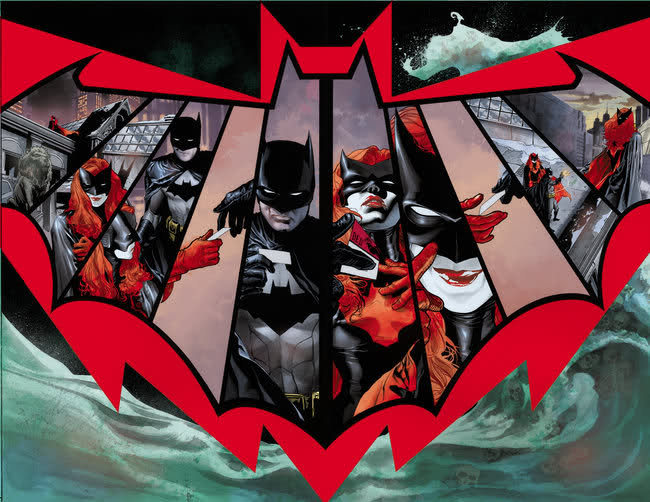
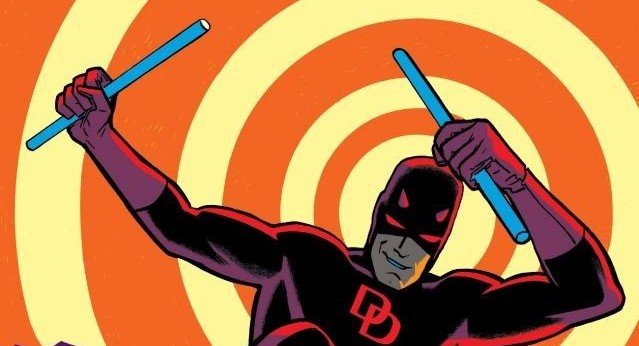
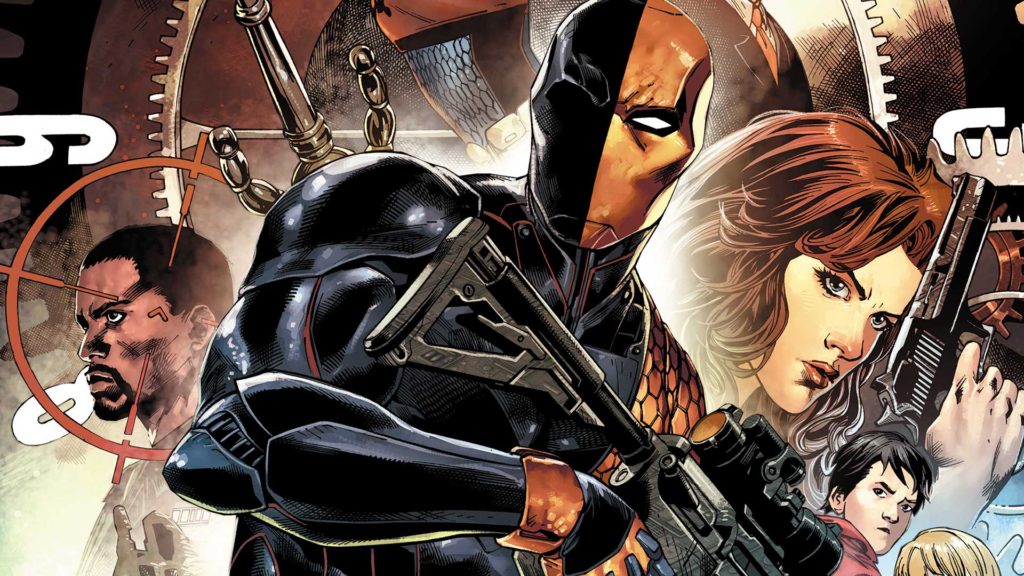
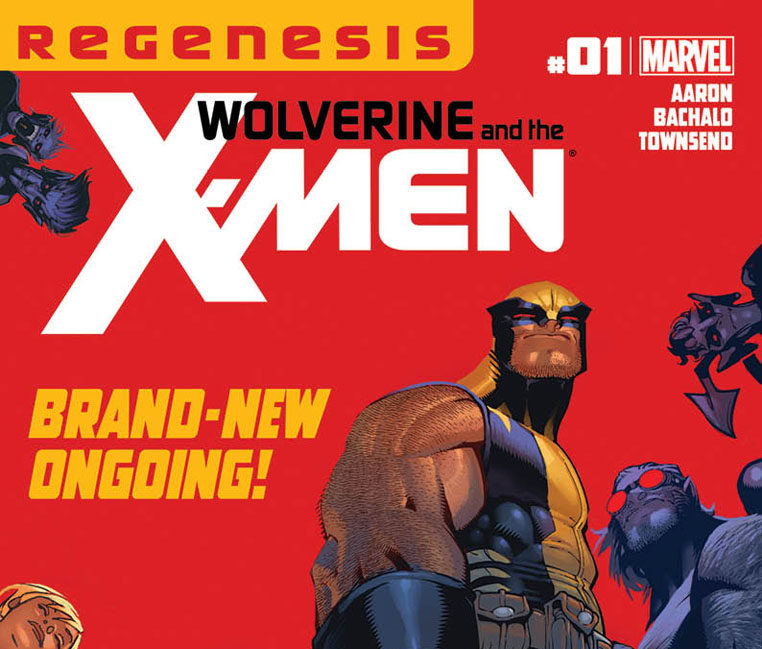
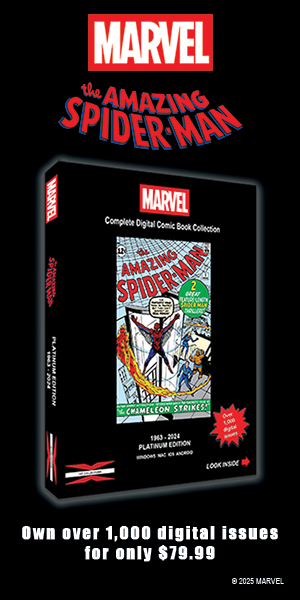
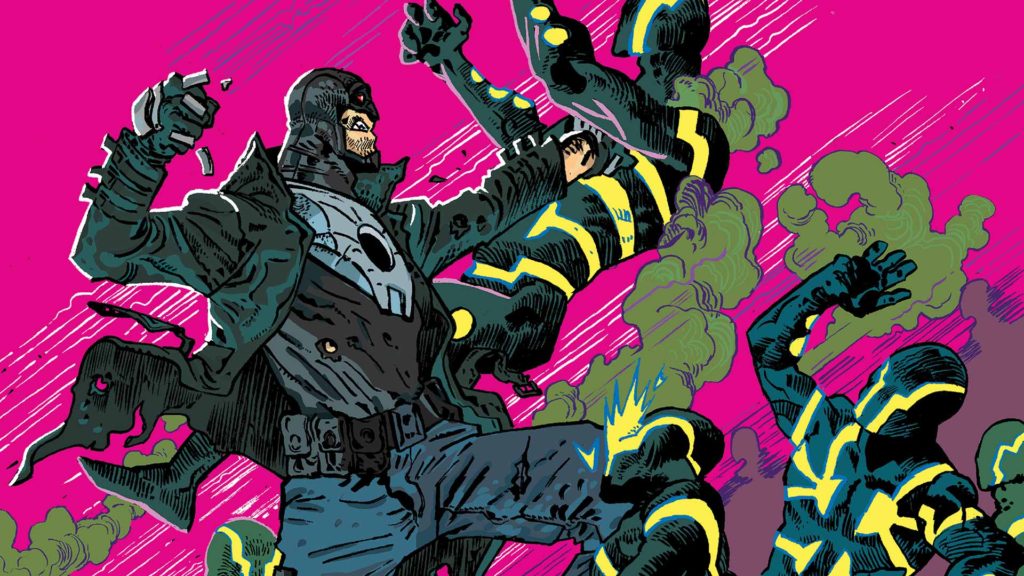
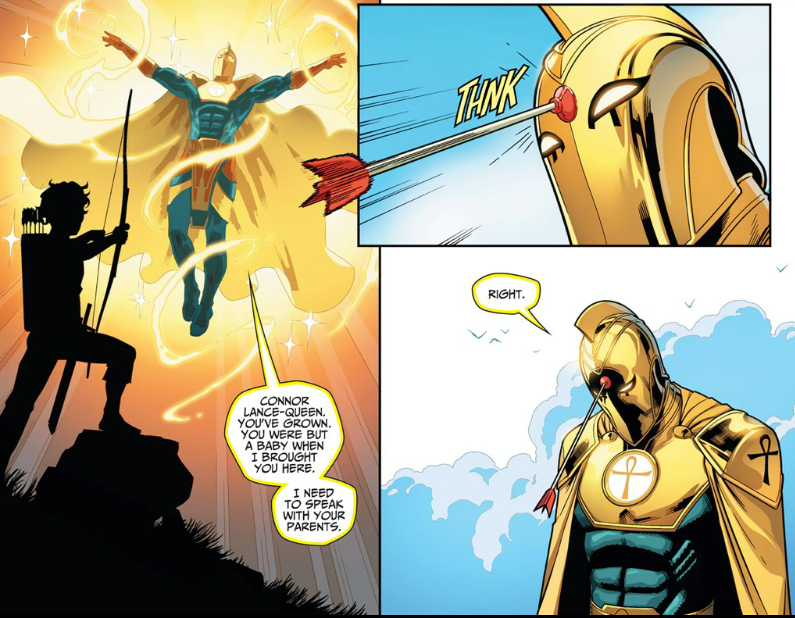
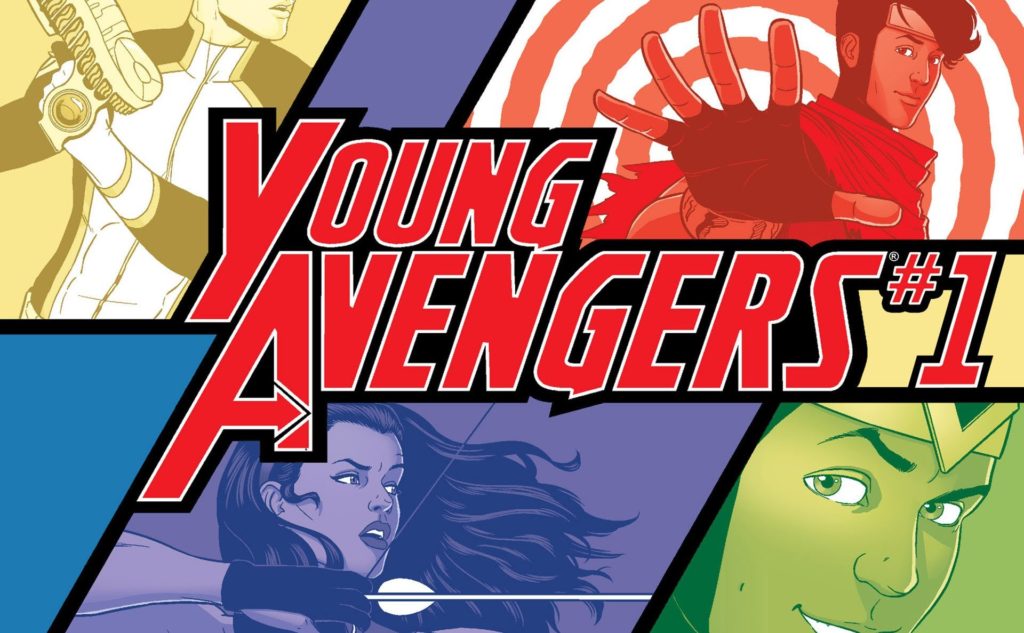
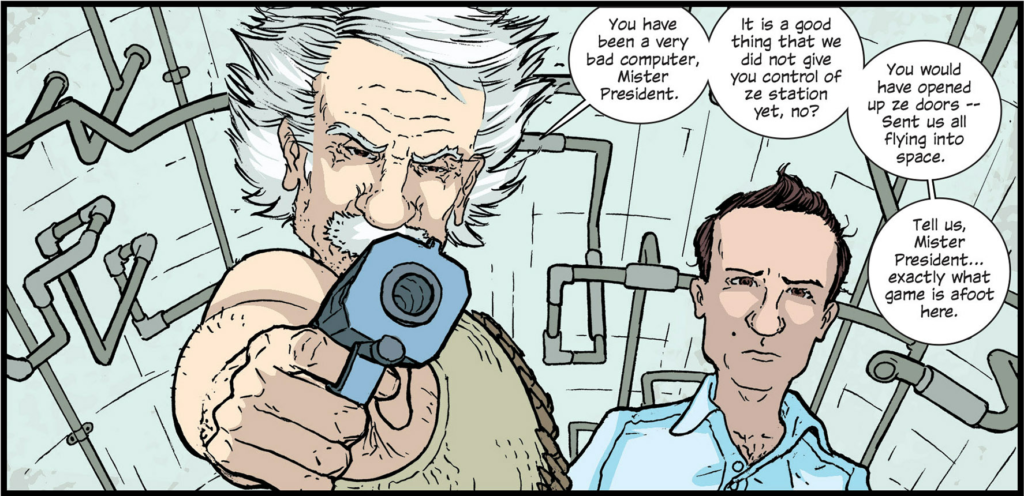
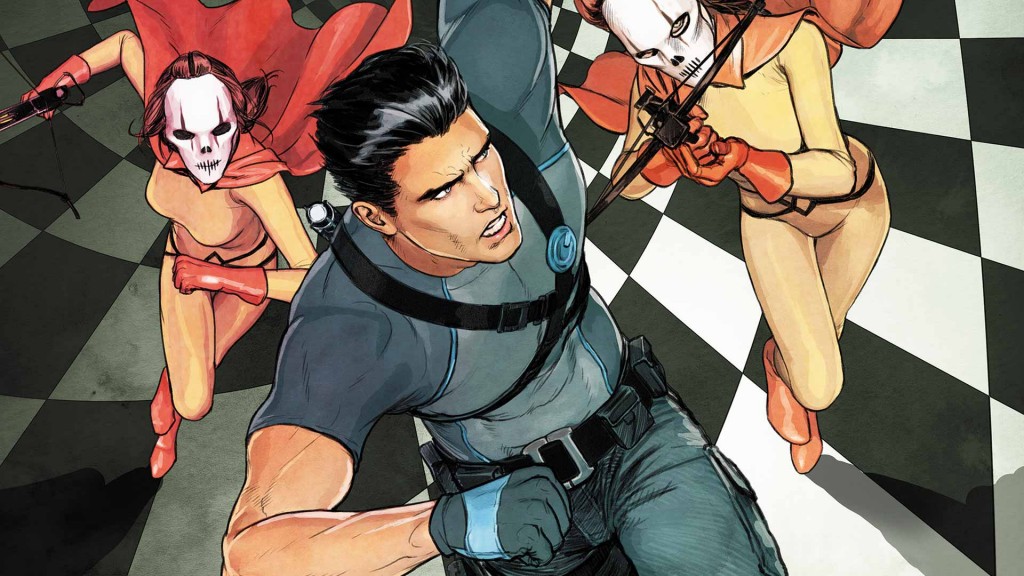
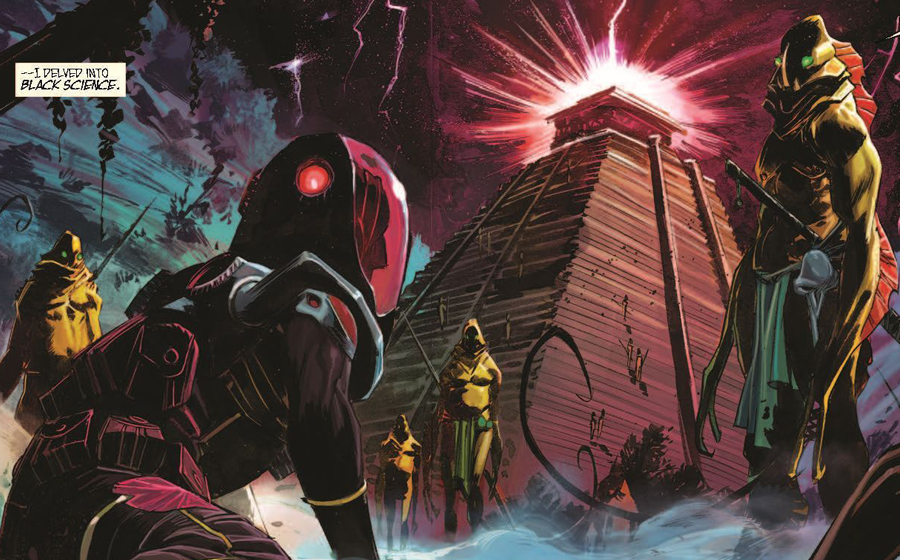
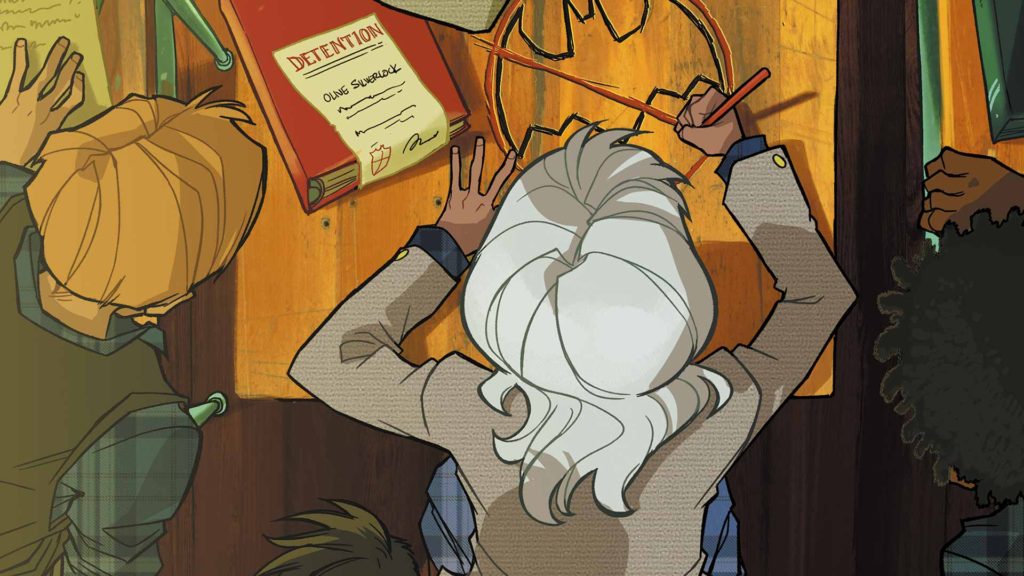
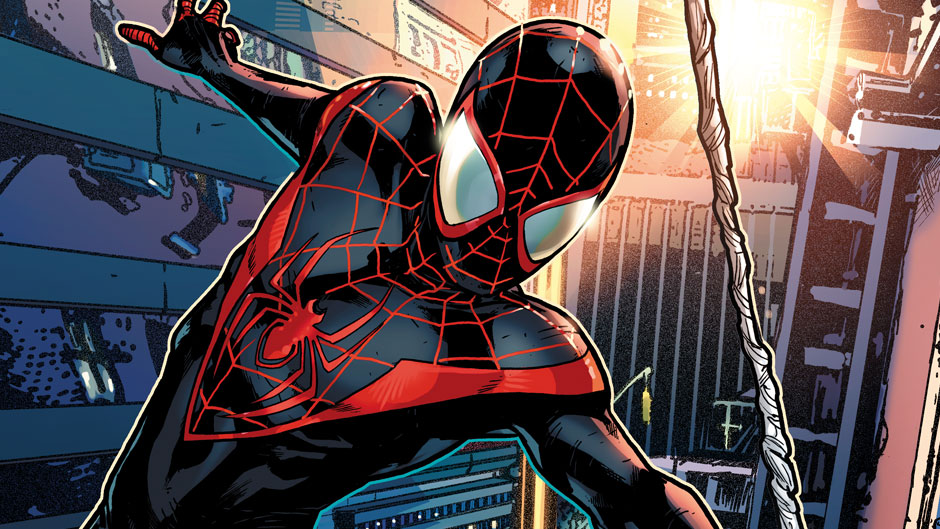
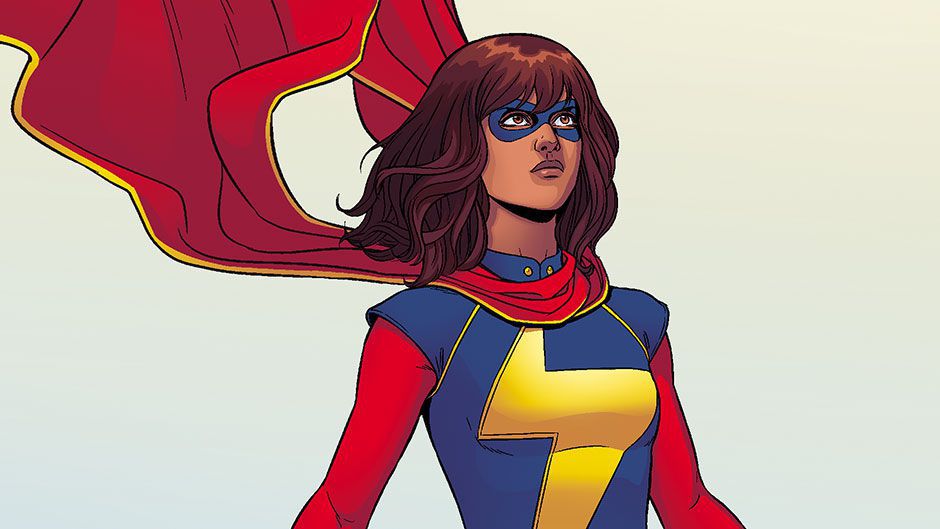
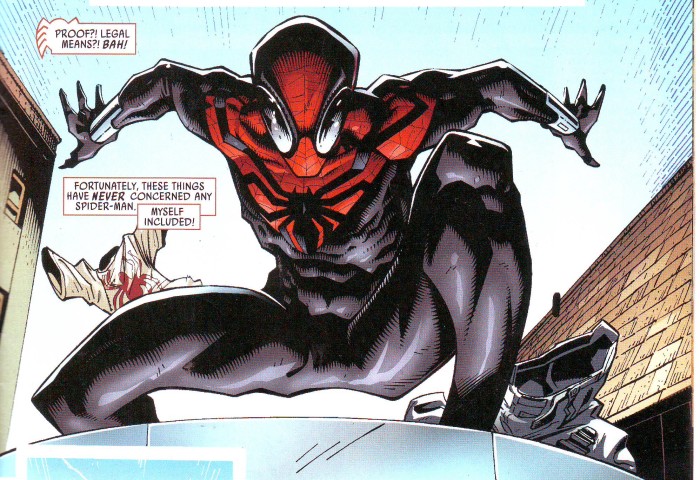
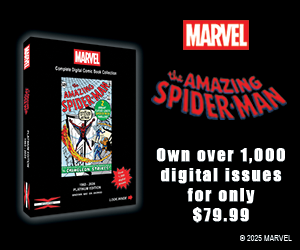
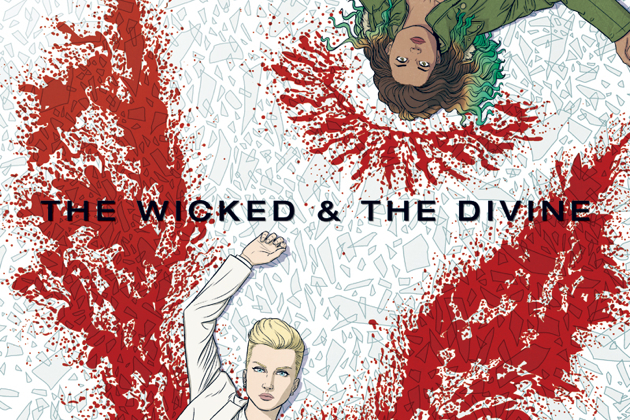
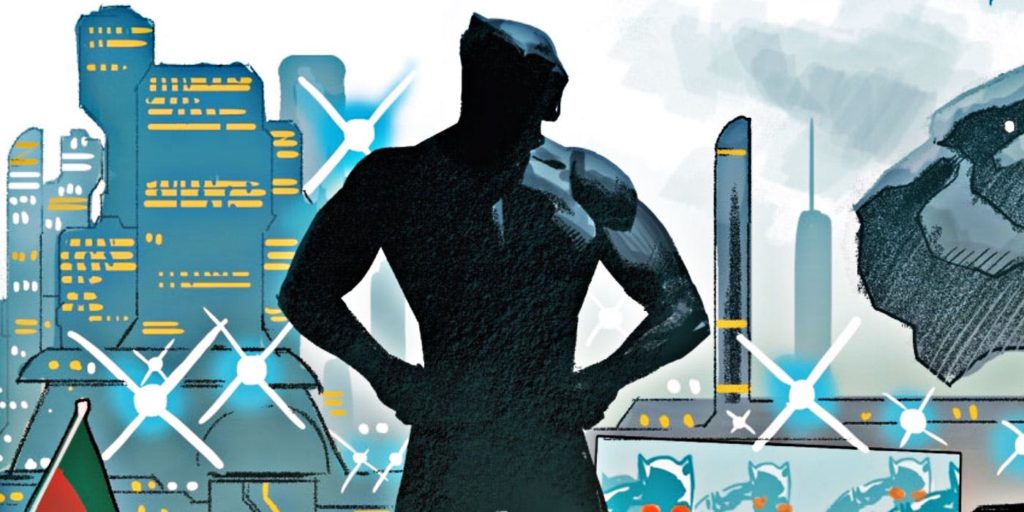
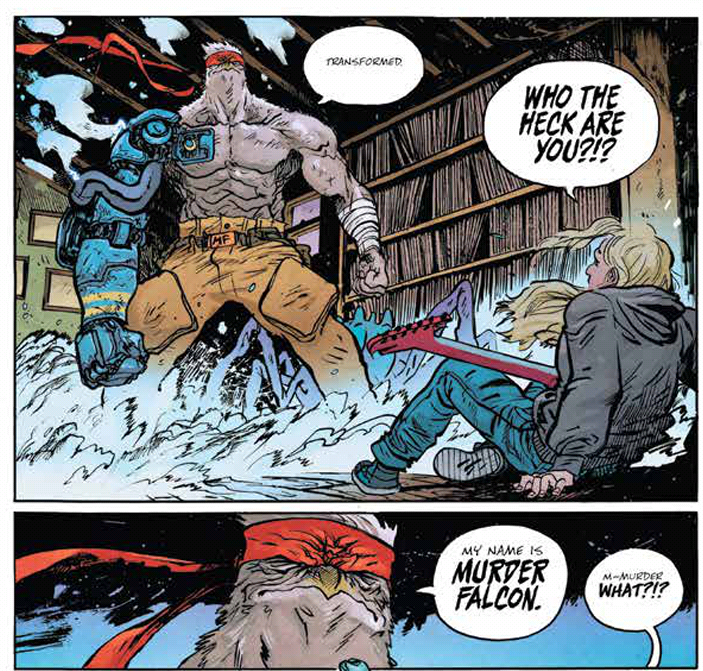
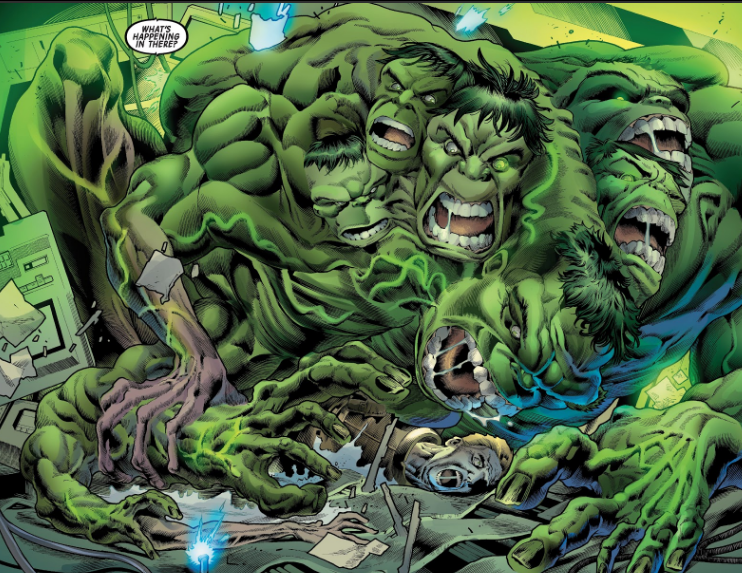
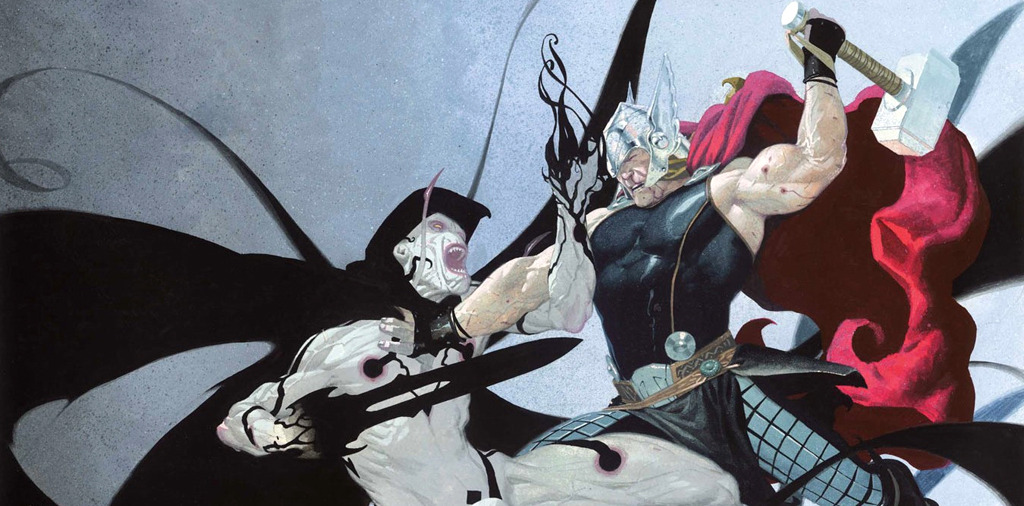
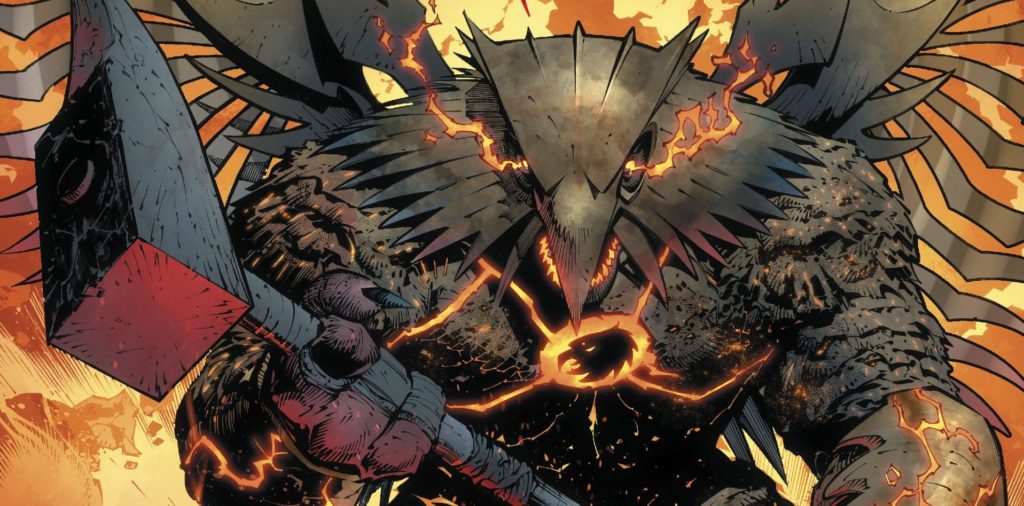
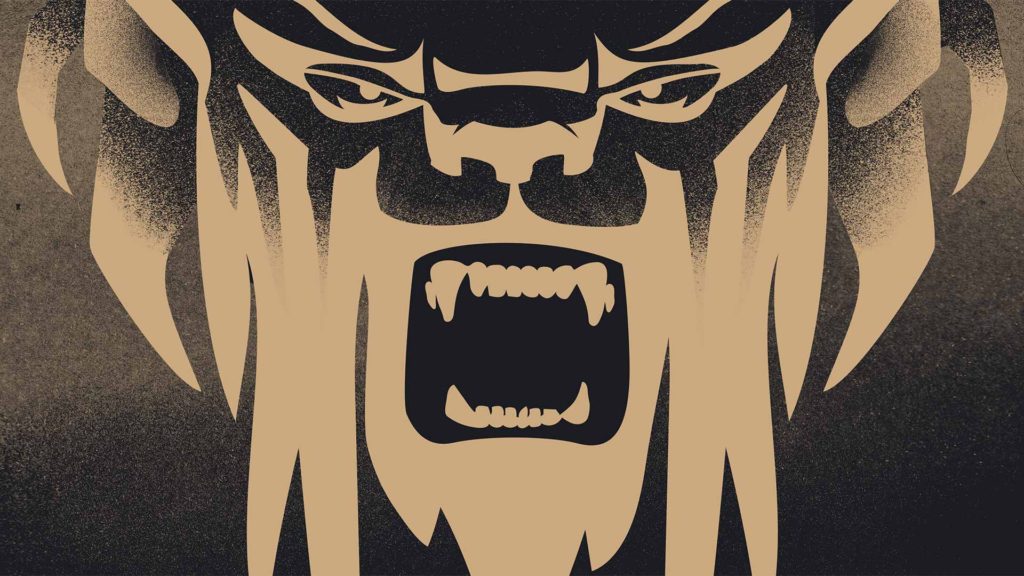
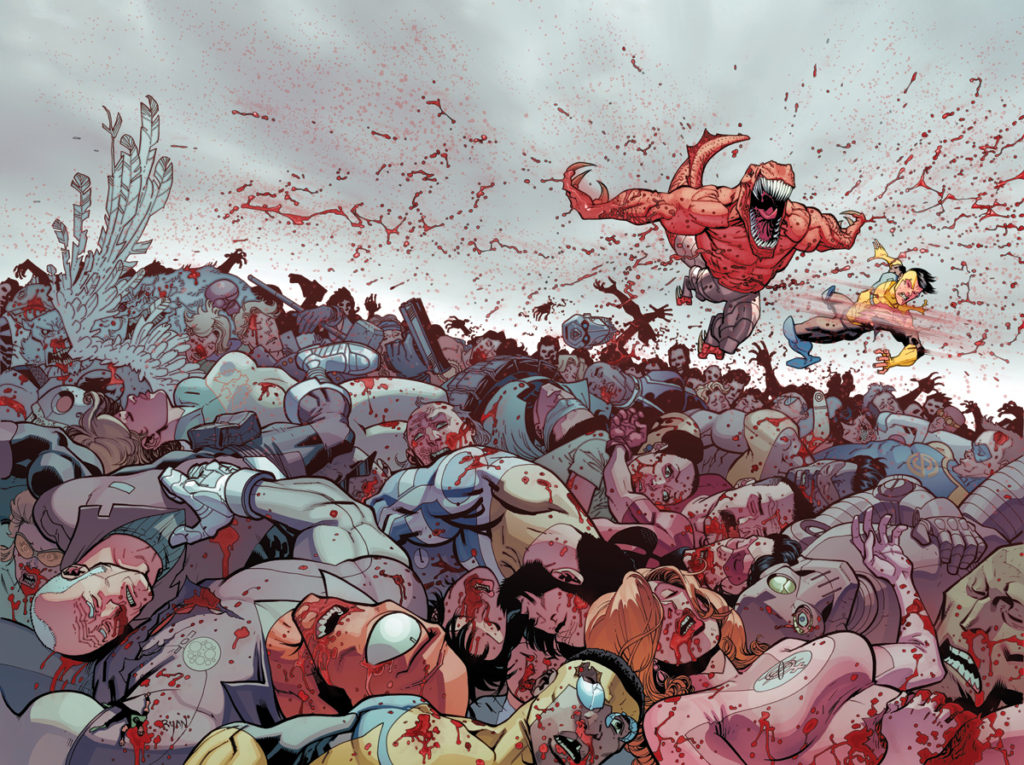
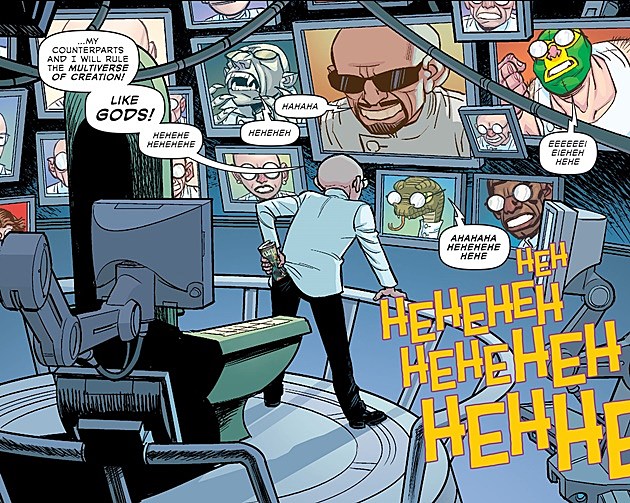
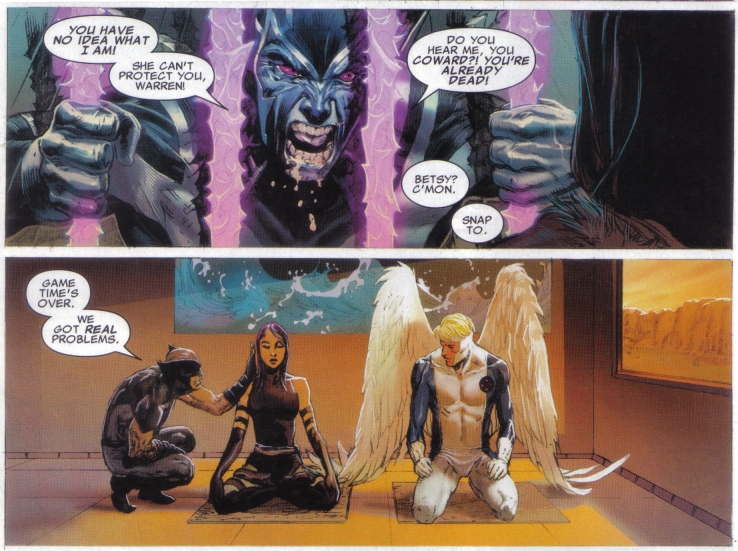
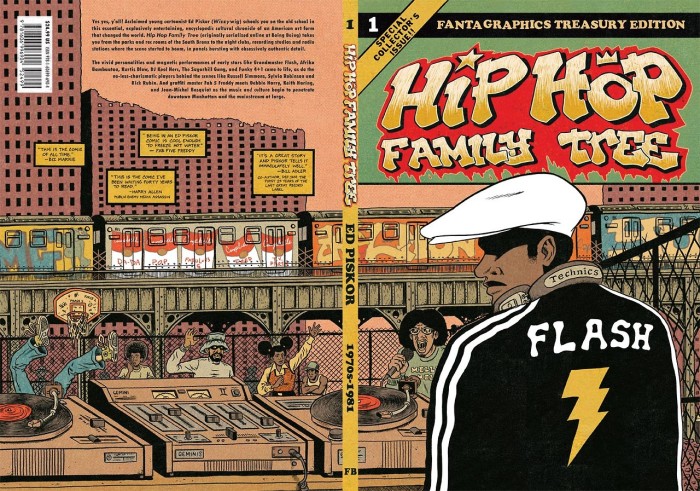
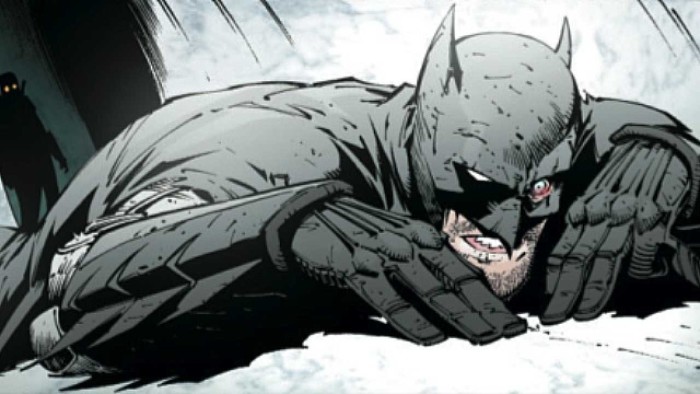
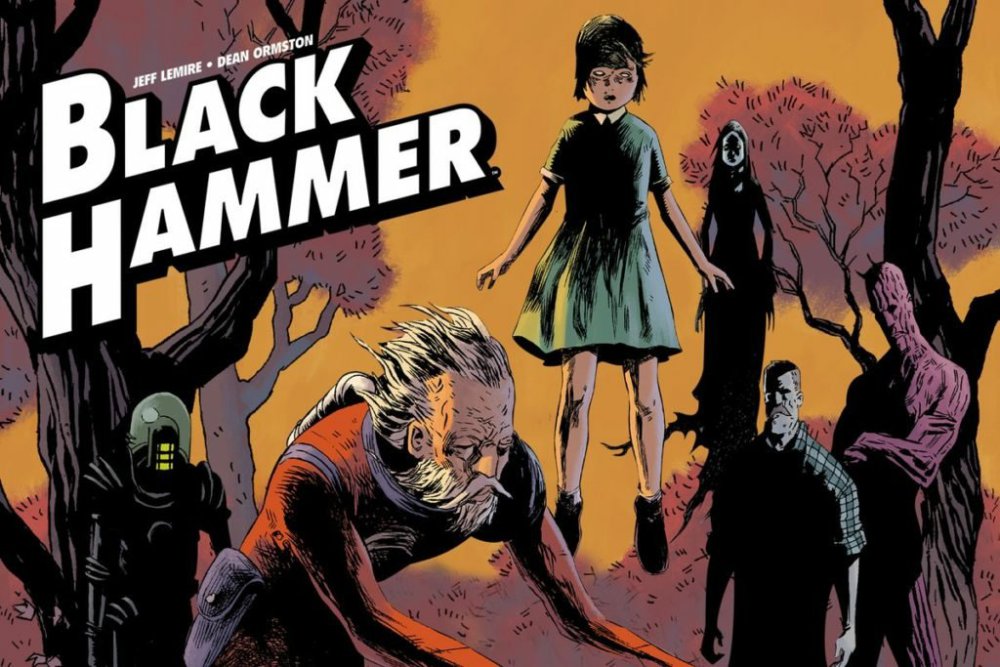
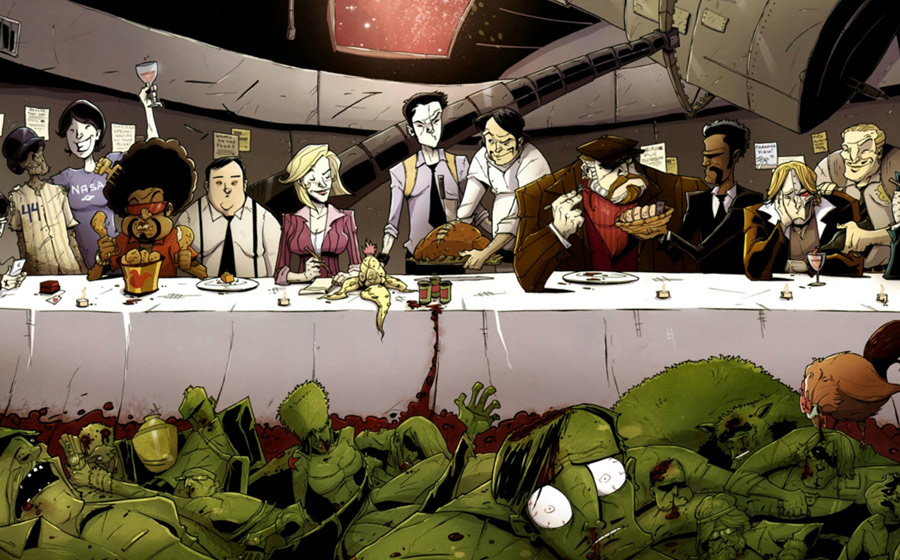
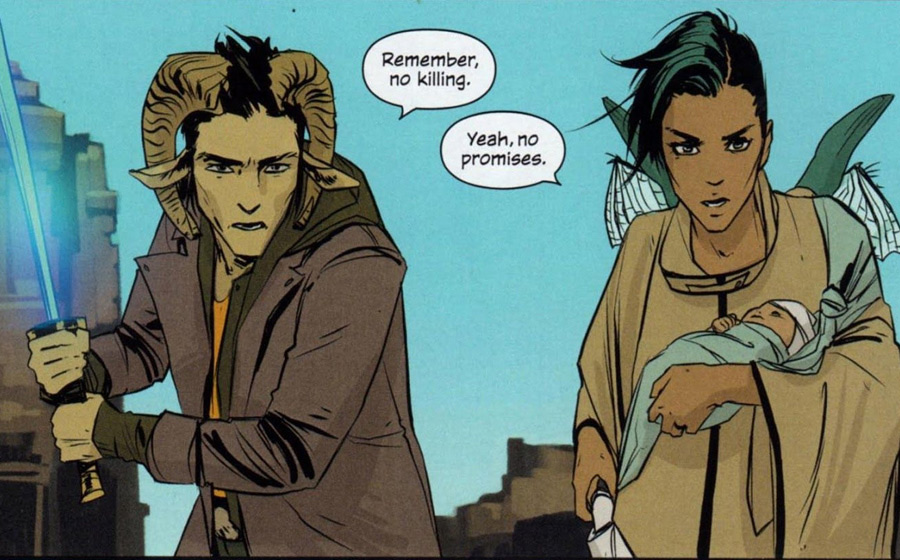
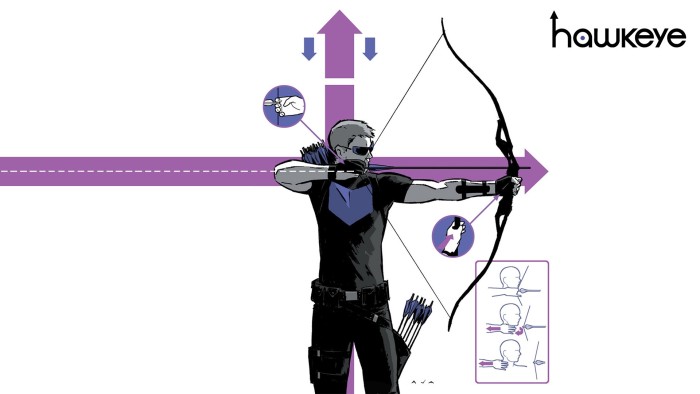
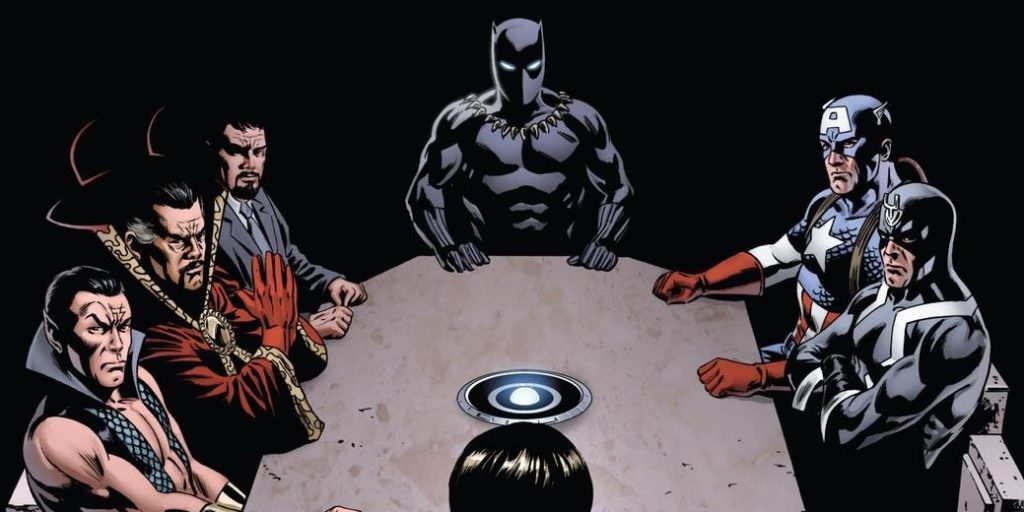
Eesh! I dont disagree with the titles on the top 50. I would have switched out alot of stuff with otherstuff but still I applaud that ya went heavy with the stuff you truly liked as opposed to being influenced by others’ lists.
BUT, as for the order, I would never have rucka’s batwoman and so many of the bottom 20 so far low when titles like Grayson, Flinstones, etc etc…
Flintstones particularly was actually an AMAZING book, extremely underrated, and many people do not realize that title was written powerfully, witty…. people will just pass by it thinking it is just a cartoon adaptation. Still, titles like batwoman are going to impact major timelines forever! Just on impact alone, I dont agree with the order.
That being said… awesome work. I like that you really deep dive into the books. You read the stories as they are intended and you rank things based on your gut and heart. Well done.
Hi Dave,
There is a formatting error specifically with this article when sorting by all Best of lists. It is now on page 2 of the list of Best of lists. Just letting you know.
Thanks!
Thanks for the note – updated the tag causing the error!
No Silver Surfer by Dan Slott?! Deadly Class? IDW’s Ninja Turtles?! The Fix? Phonogram? I’m also surprised you had DD by Mark Waid that low?
Some honourable mentions I’d add are: Black Widow by Waid, All-New X-Factor by Peter David, All New Wolverine, Star Wars, Darth Vader, Iron Man by Bendis, Astonishing Ant-Man, Spider-Gwen by Lemire, Dr. Strange by Jason Aaron, Cosmic Ghost Rider, Spider-Man Life Story, and Thanos by Cates.
Should have made this a top 100 list?
How did Paper Girls not make the list?
Let’s just say I have a lot of catching up to do on Paper Girls.